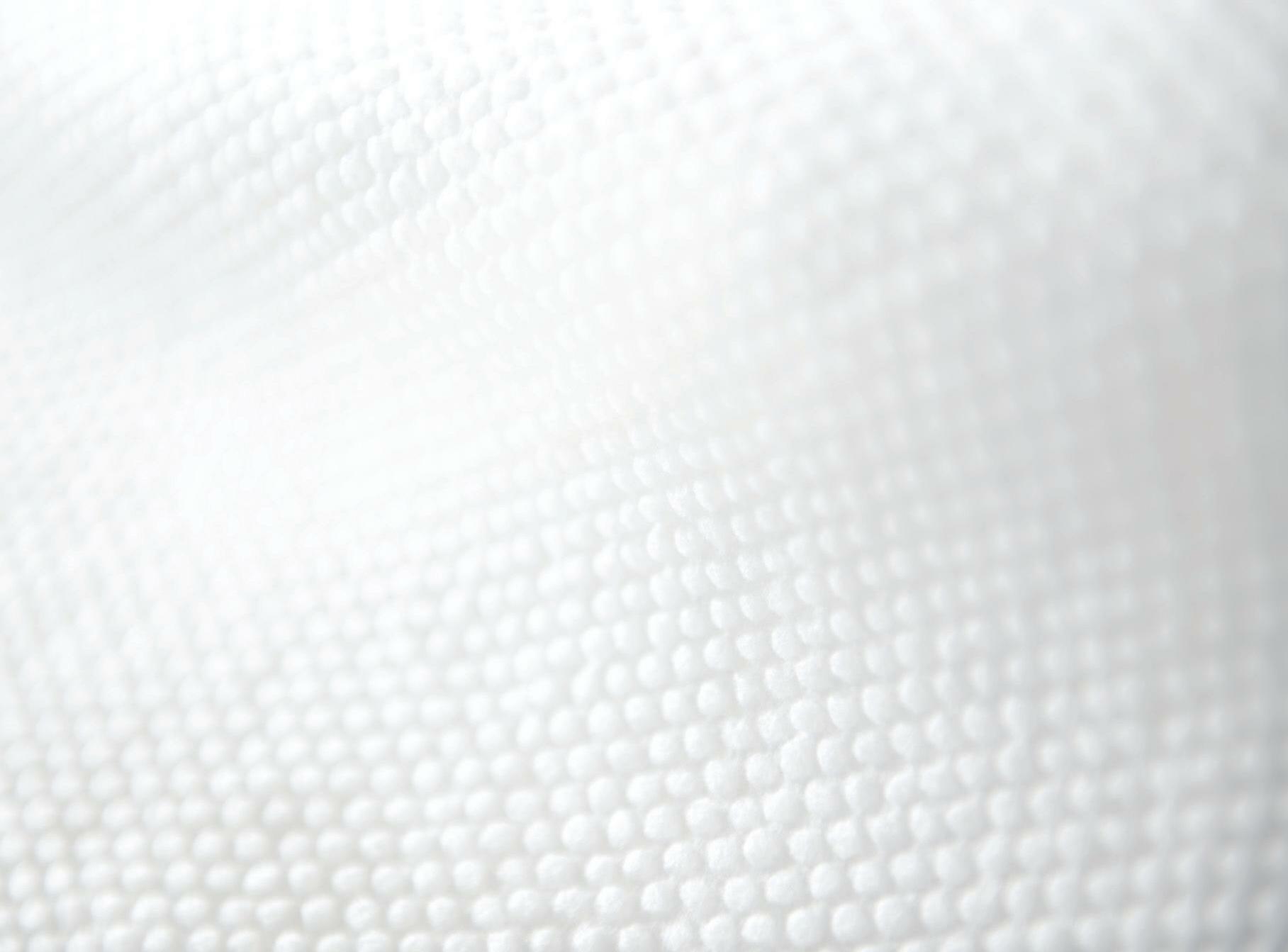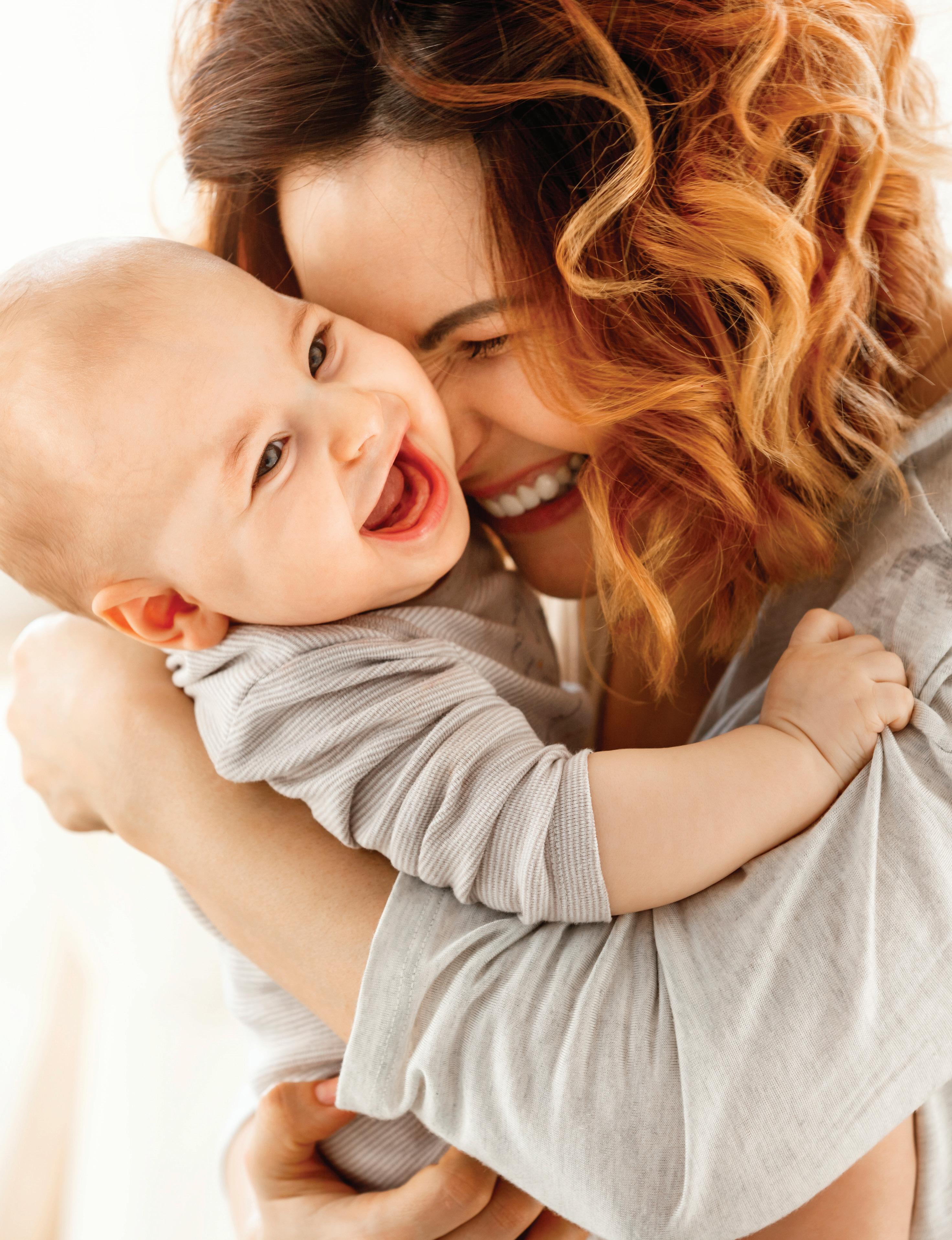
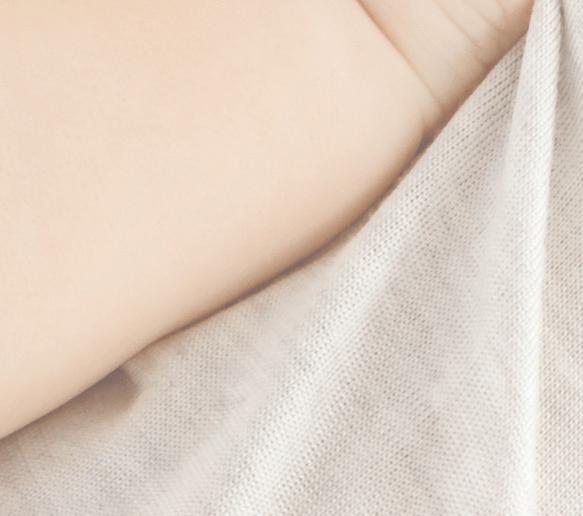
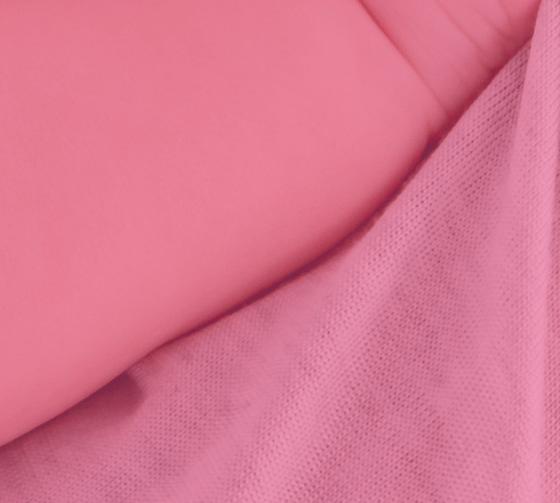















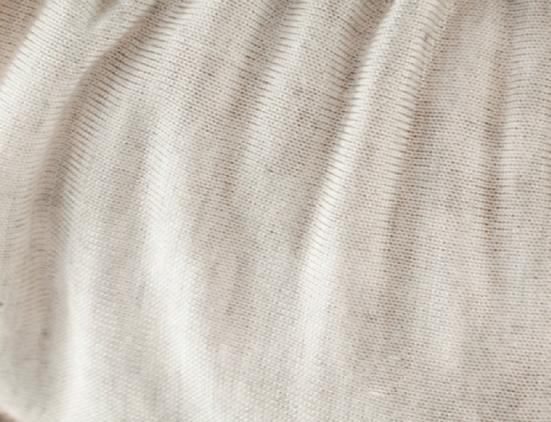





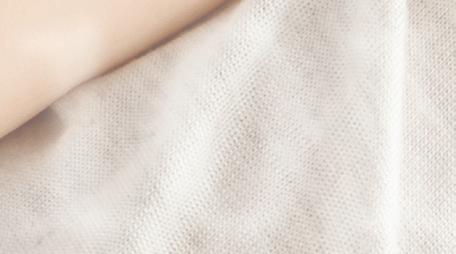

































Babies gently and comfortably spin round on their tummies, stretching and building upper body strength while exploring lots of squeaky, crinkly and tactile fun. Coming in August.








The Lamaze Infant Development System ® is designed in conjunction with child development experts focused on “The Right Toy at The Right Time”. With a 20+ year heritage in infant play, our toys encourage bonding through play at every stage of your baby’s development.



Lamaze International is a nonprofit organization that promotes a natural, healthy and safe approach to pregnancy, childbirth and early parenting. Your purchase supports education and advocacy for safe and healthy pregnancy, birth and early parenting around the world. Learn more at lamaze.org.

















26



When you take small, realistic steps, you’re more likely to lose weight and keep it off longer.
Looking to travel with your little ones? Be prepared when you plan ahead—then relax and enjoy the journey when traveling with tots!
Being a new dad can be tough on even the strongest person. And just as new mothers can suffer from postpartum depression (PPD), so can new fathers.
If you’ve never experienced cesarean, the recovery can be somewhat of a shock.

What was once a promise of potential future treatment is more mainstream than ever before.
21

Here’s why the maternal-child nurses of AWHONN collect diapers, wipes and other essentials for at-risk families in their care and in their communities.
Swaddling your baby can calm and soothe them as well as reduce crying and any pain they may be experiencing.

26
Can seafood, eggs and dark leafy greens transform your prenatal nutrition?
Changes to your breasts begin even before you know you are pregnant. Here’s what you can expect during and after your pregnancy.
These 6 early labor tools will help you prepare for active labor when it starts!
No mom wants her baby to be born premature, but what if baby is born too early?
35
Managing breastfeeding pain and difficulty in those early days is essential to meeting your breastfeeding goals.
Lots of moms aren’t aware that a breast pump and nursing supplies are available to many under the Affordable Care Act.
Your late preterm baby born between 34-36 weeks has unique care, feeding and development needs.
53
Babies all over the world typically cry every day from birth on—so what’s normal?
55
When it comes to reflux, it’s a matter of recognizing what’s normal and what isn’t.
59
From birth, protecting and promoting baby’s healthy skin is a daily job.
62
Mothers who lose their infants are at high risk for prolonged grief disorder (PGD).
These tips will help your baby cut their chompers with as little pain as possible.





www.sophiethegiraffe-usa.com










 HEALTHY MOM&BABY EXPERT ADVISORY BOARD
HEALTHY MOM&BABY EXPERT ADVISORY BOARD
CANDACE ANN CAMPBELL , DNP, RN, CNL

University of San Francisco Concord, CA
ROBERTA DURHAM, RN, PhD
California State University East Bay Hayward, CA
JOANNE GOLDBORT, PhD, RN Michigan State University East Lansing, MI
HELEN M. HURST, DNP, RNC-OB, APRN-CNM University of Louisiana School of Nursing Lafayette, LA



ELIZABETH JORDAN, DNSc, RNC FAAN University of South Florida College of Nursing Tampa, FL
CAROLYN “CARRIE” LEE, PhD, MSN, CNE, RN University of Toledo College of Nursing Toledo, OH
JENNIFER LEMOINE, DNP, APRN, NNP-BC University of Louisiana at Lafayette Lafayette, LA
RITA NUTT, DNP, RN Salisbury University Salisbury, MD
SUSAN PECK, MSN, APN Summit Medical Group Cedar Knolls, NJ
MICHELE SAVIN, MSN, NNP-BC Christiana Health Services Wilmington, DE
PAT SCHEANS, MSN, NNP Legacy Health System Portland, OR
SHARON JEAN SCOTT, DNP, MSN, RN Germanna Community College Locust Grove, VA
JAMIE M. VINCENT, MSN, RNC-OB, C-EFM
John Muir Medical Center Walnut Creek, CA
KIMBERLY WILSCHEK, RN, CCE Medical Revenue Solutions Chicago, IL

CHARLOTTE WOOL, PhD, RN, CCNS
York College of Pennsylvania York, PA
TAMERA YOUNG, RN, MSN
Central Ohio Technical College Zanesville, OH
MARIA OPLT Lafayette, LA
AWHONN’s mission is to improve and promote the health of women and babies. Healthy Mom&Baby is powered by the nurses of AWHONN.
 BY JENNIFER L. DOYLE, MSN, WHNP-BC
BY JENNIFER L. DOYLE, MSN, WHNP-BC
Can you imagine not being able meet your child’s basic needs? For 1 in 3 families in this country, that’s a daily struggle. Many families don’t have enough diapers to keep their youngest children clean, dry and healthy, much less maintain a required supply of diapers at childcare so that mom or dad can go to work.
Diaper need is an increasingly prevalent problem—and it affects families across the full economic spectrum, hitting the most vulnerable families the hardest. ere are no federal assistance programs that provide for diapers of any type.
While the problem is dire, it’s not without hope. Across the country, the maternal-child nurses of the Association of Women’s Health, Obstetric & Neonatal Nurses (AWHONN), which publishes this magazine, collect and give diapers to at-risk families in their hospitals and communities. ree years ago, AWHONN nurses launched the Healthy Mom&Baby Diaper Drive to increase the amount of diapers available to families in need.
ese mother-baby nurses are the ones who recognize families in need and the healthcare providers with the resources to make a difference. Gallup polls consistently show nurses are the most trusted healthcare providers, and AWHONN nurses are the ones moms confide in before leaving the hospital with their new baby. Nurses give diapers to their patients, host educational fairs and baby showers to share more resources with families, and stage diaper drives to ensure they can meet this ever-increasing need.
e Healthy Mom&Baby Diaper Drive tells the stories of how nurses are making a difference for moms and babies as it tallies how many diapers nurses collect and give away. Read how nurses in Chicago and the greater Philadelphia area are making a difference on p. 41.

ere may be help for you in your own community. Since 2015, Healthy Mom&Baby has partnered with diaper maker Huggies™ and the non-profit National Diaper Bank Network to make sure families in need get the help they need. At DiaperDrive.org, you can search for a diaper bank near you, and go to 211.org to fi nd other forms of assistance. Share your needs with your nurses during prenatal care, when you’re in the hospital for baby’s birth, and when you follow up post-birth; your nurses are there for you and they truly care.
JENNIFER L. DOYLE, MSN, WHNP-BC, is the AWHONN 2018 President.The perfect addition to any nursery library with its loving and inspiring message


This the first time there’s ever been you, so I wonder what wonderful things you will do. . . .



Your baby’s doctor knows what is best for their health, but only you know what is best for their heart and mind.
In the #l New York Times bestselling picture book, Emily Winfield Martin celebrates every individual child and the infinite possibilities ahead of them.





Diaprex is formulated without the emulsions that are sometimes found in other diaper rash ointments and creams. Emulsions are less-efficient barriers to moisture compared to Diaprex. Generations of Moms and Dads were Diaprex babies and they are passing the tradition onto their children and grandchildren. Diaprex prevents skin irritation and infections from developing while maintaining healthy skin in the toughest of environments, your baby’s bottom.
When only the BEST will do for your baby, choose Diaprex Diaper Rash Ointment.


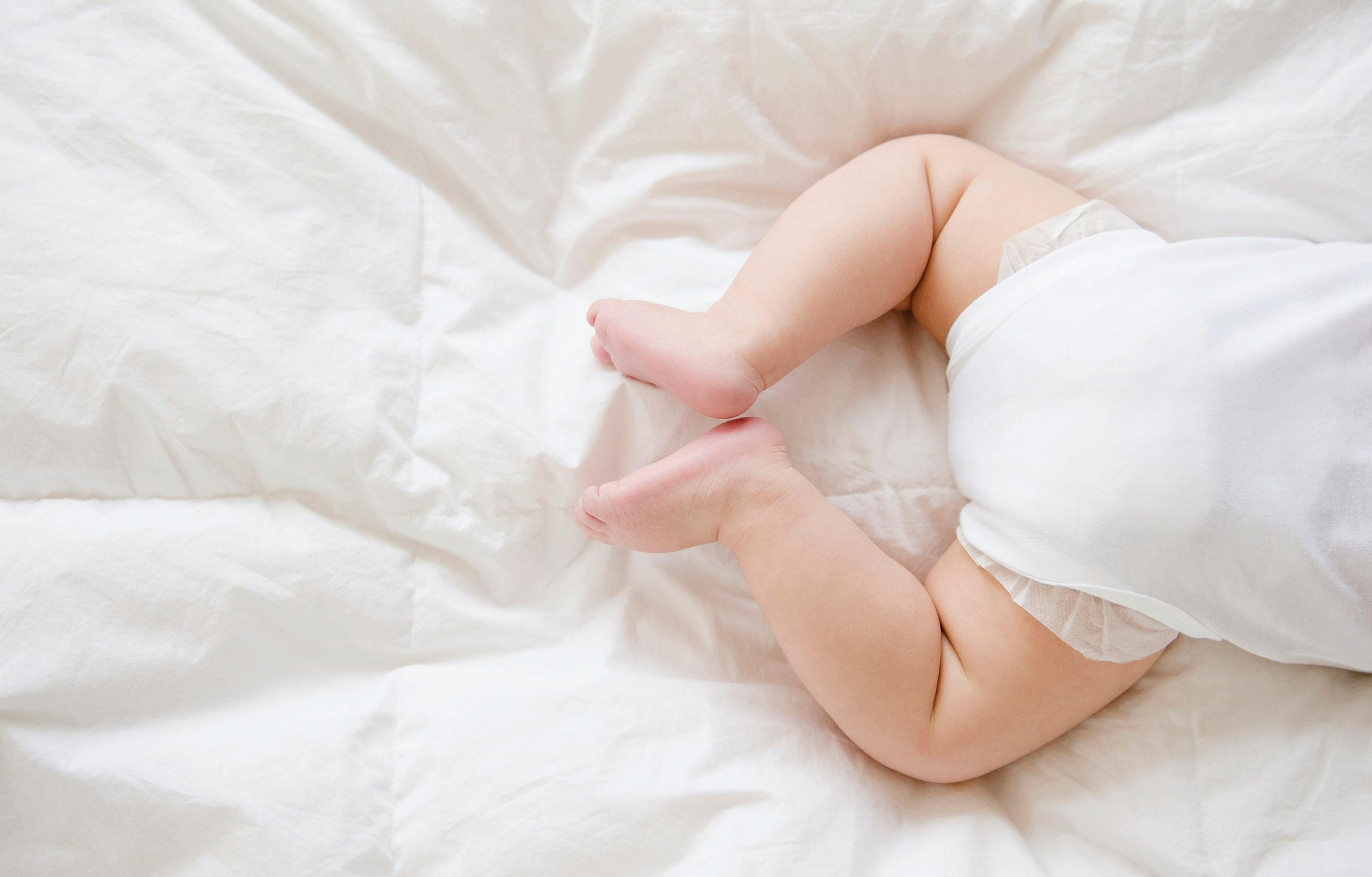
Zinc Oxide 9.6% and White Petrolatum 67.6%







Emollients: Lanolin USP, Beeswax, Castor Oil.


Natural Fragrance: Balsam Peru for a pleasant scent.


Prime members get free shipping and two-day delivery

Diaprex is the brand trusted by Moms and Physicians for over 50 years to sooth and protect.
www.Diaprex.com



What makes Diaprex different and why should you choose it over other Diaper Rash products?
AWHONN 2018 President
Jennifer L. Doyle, MSN, WHNP-BC
Interim Chief Executive Offi cer

M. Suzanne C. Berry, MBA, CAE
Vice President; Marketing, Communication & Publications


Tom Quash, CAE
Editor-in-Chief & Director of Publications
Carolyn Davis Cockey, MLS, LCCE
Director of Women’s Health
Catherine Ruhl, CNM, MS
Assistant Managing Editor & Writer Summer Hunt, ELS
Group CEO & Publisher
Kevin Harrington
EDITORIAL
Managing Editor: Kayley Loveridge

DESIGN

Art Editor: Friyan Mehta
Printed in the United States on paper made with 30% post-consumer recycled fiber. Please recycle this magazine!

Healthy Mom&Baby is published by Maitland Warne in partnership with AWHONN.


© AWHONN, 2018. All rights reserved. All material in Healthy Mom&Baby is wholly copyright. Reproduction without the written permission of the publisher is strictly forbidden.
Neither this magazine nor its contents constitute an explicit or implied endorsement by AWHONN or by Maitland Warne of the products or services mentioned in advertising or editorial content. The editorial content in this publication does not necessarily represent policies or recommendations by AWHONN. This publication is not intended to be exhaustive. While every effort has been made to ensure accuracy, neither AWHONN nor Maitland Warne shall have any liability for any errors or omissions. Readers who may have questions should consult their healthcare provider.
MAITLAND WARNE
123 W Madison Street, Suite 1600, Chicago, IL 60602, USA Tel: (312) 572-7727 Fax: (312) 284-5864 www.maitlandwarne.com

AWHONN Carolyn Davis Cockey, MLS, LCCE carolyndc@awhonn.org 3 Shoreland Drive Osprey, FL 34229 Tel: (800) 673-8499 x 1464 www.AWHONN.org


If consumer products manufacturers have their way, asking for Alexa’s help when it comes to baby care may not be too far off. Before you ever conceive a pregnancy, technology is already here to help you like never before. From wearable fertility trackers and apps that digitally designate when you should do it, to pregnancy contraction counters that distinguish baby’s kicks and Braxton-Hicks from true labor contractions.

As the rate of health complications among pregnant moms continues to increase, wearable monitors related to your health during and after pregnancy keep your healthcare providers just a tap away on your mobile device. Once baby is here, smart tools make sure you never lose a drop of precious breastmilk through wearable pumps that collect your milk hands-free. And these same tools continuously monitor baby’s vitals and temperature, as well as adjust their nursery for the perfect environment.
Thanks to telehealth and wearable monitors, you can quickly glance at the wetness monitor on baby’s diaper to learn if baby needs a change and even reach out to their healthcare provider for a quick check when baby’s temp spikes without ever leaving the comfort of your home.

Most new moms (76%) want tech built into their pregnancy, nursery and infant care, and we’ve got the full round-up of some of the most popular products on p. 48.

Still, the best things are low-tech, like baby snuggles, hugs and smiles. And we’ve got lots of great low-tech advice from nurses for you as well, like safely swaddling your baby, p. 45; the latest science on the best way to bathe baby, p. 59; and how low-tech, high-touch is the most important thing for your baby born late-preterm, p. 32. Don’t miss our guide to preparing for a preterm baby if you do go into labor early, on p. 31, or the latest advances in cord blood banking and therapies, on p. 21.
High-tech or low, you can never go wrong when you act on the advice from the nurses you trust in this and every issue.
Until next time,
Carolyn Davis Cockey, MLS, LCCE
Editor-in-Chief & AWHONN Director of Publications
Health4Mom@AWHONN.org

The first six weeks after childbirth is referred to as the postpartum period. During this time, you will have vaginal discharge called Lochia, which may feel like a heavy period at first, and will gradually decrease to light spotting. Bleeding after childbirth is perfectly normal, and is a sign that your body and uterus are recovering from birth. As a new mom, it’s important to take care of yourself as your body is healing. Use p products made with non-toxic ingredients, like Rael’s certified organic cotton cover pads. These Amazon best sellers are perfect for new moms looking for a gentle, safe pad for use after childbirth Free of chlorine, dye, fragrance, pesticide, and rayon They are the longest organic overnight pads on the market, super-absorbent and comfortable


Rael was created for women by women. We are committed to sourcing the highest quality ingredients, developing innovative products, and offering easy access to healthy alternatives for women around the world


The
The unique design has internal pockets for reusable ice/ heat packs that target low and mid back pain, providing up to 3 hours of relief. The wrap adjusts with your changing body, using compression to provide support.









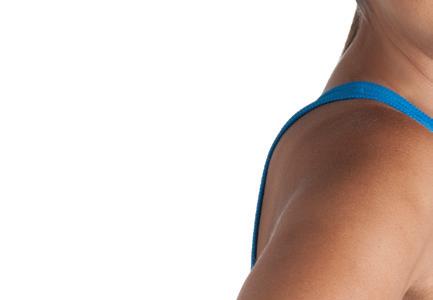



You may be surprised to learn that early pregnancy loss is quite common—1 in 4 pregnancies end via miscarriage, statistics show. Still, surveys show many women aren’t aware of this fact, and most (70%) say they believe stress caused their pregnancy loss. Blaming themselves, 27% of women who have lost a pregnancy this way think it happened because of something they did, according to the medical technology company, Ava. In fact, about half of all miscarriages are caused by chromosomal abnormalities. And unless a woman received a D&C (dilation and curettage) procedure to remove any remaining tissue from her uterus, she should be physically able to start trying to conceive again as soon as she’s ready emotionally. Grieving, restoring your body to health and taking time to prepare yourself for another pregnancy are all part of the process of moving through miscarriage. MORE,




Though you may not often hear about Zika in the news, it remains a threat to pregnant women and their babies. If you’ll be traveling to Zika-affected areas, ask your healthcare provider about prevention strategies to protect your health and keep you safe, including clothing and repellents applied to your clothes to keep mosquitoes away. If you’ve just returned from someplace where Zika is active, experts advise waiting at least 2 months after returning home before you try to conceive; men should wait 6 months.

86% 26





Women now have an average of
55% of women 40-44 are mothers —a 6% increase from 2006
is the average age for new mothers in the US, up from age 23 in 1994
of nevermarried women in their 40s have at least 1 child
A majority children— compared to an all-time low of 1.86 in 2006
2.07
OLDER AMERICAN MAMAS
More women are becoming mothers—they’re having more children, and waiting until they’re older, say Pew Center researchers:
Marrying older, more women in higher education and the workforce, and the effects of the 2007–08 recession may have had the greatest impact on these numbers.
ZIKA VIRUS STILL A RISK
Most miscarriages happen in the 1st trimester—some before a woman even realizes she’s pregnant.
Up to 80% of Zika cases may not show any obvious symptoms.



When you take small, realistic steps, you’re more likely to lose weight and keep it off longer. By adding one new goal per month, these top 12 tips will help you lose weight as you gradually become healthier and fitter.
t rack It
Clear out the temptations and stock your kitchen with healthy staples such as frozen or fresh fruits and veggies, whole grains, nuts and nut butters, dried beans, seeds, olive oil, low-fat milk and yogurt, and eggs.
Keep a food log— there are many great and free apps, and pen and paper will also work. Be accountable for what you’re eating; recognize where you need improvements.

Go Gra I n Y
Get 3 servings of whole grains every day. Choose brown rice, whole wheat pasta, quinoa, or even air-popped popcorn. These foods help fill you up on fewer calories and can reduce heart disease and diabetes risks.

a dd a c la SS
Just because you’re not in school doesn’t mean you can’t learn new skills. Try a new exercise or take a Mommy & Me class to encourage bonding, gain interaction with other new moms and boost your selfconfidence.

Grab Snack S
Always keep a nutritious snack with you, such as nuts or an energy bar. Going more than 4-5 hours between meals can set you up to overeat.

Go plaY
Be active with your family no matter how young your children are. Go to a park for a healthy picnic and nature walk or play family-friendly sports like basketball, swimming or biking.

StaY J UIc Y
8-10 cups of water a day will keep your energy high and metabolism fast. Add fresh fruit to your water to spike its flavor.

As a mom, going to the gym may be tough with a newborn. Make time for activity at home while baby is sleeping. Stream a spin or yoga class (you decide!), or let baby nap in the stroller while you walk.

hI t the far M er’ S Market
Visit a produce stand and choose a new fruit or vegetable each week to get a variety of nutrients, including antioxidants and fiber.

It’s healthy and balanced to include all the foods you love in moderation, especially dark chocolate. Otherwise, you’re more likely to overeat when you’re faced with them.

Sk I p Salt S
Instead of salty deli meats or sausage, grill chicken and fish, or roast turkey to reduce bloating for swimsuit season.

New research suggests that there’s no safe amount of drinking. If you’re going to drink, drinking in moderation means no more than 1 alcoholic drink per day for women and no more than 2 for men. The lowest in calorie choices include wine, beer, or liquor without mixers.
Rachel Be R man, RD, is a registered dietitian, author and general manager at Verywell.

Looking to travel with your little ones? Be prepared when you plan ahead—then relax and enjoy the journey when traveling with tots!
When you’re traveling with young children, you might think taking a trip sounds like the opposite of fun. With these tips, you’ll be prepared for the twists and turns that are family adventures!
Make a Traveling-wi T h-ToT s CheC klis T Preparation is key, and nothing makes you feel more organized than a list to check yourself against and tasks to be crossed off as accomplishments toward your vacation dreams.
List the big things first: destination; sights to see; accommodations; flights, train tickets or driving routes/times.
Then work on more detailed lists: baby gear you’ll bring or rent at your destination, and what you can order and have waiting for you, such as extra diapers, wipes, sunscreen, pool toys.
Prioritize your packing list: It’s your to-do list going and returning home. It will keep you from feeling overwhelmed and calm those last-minute fears that you’ve left something essential at home.
Don’t over-plan: Choose 1 or 2 activities per day. Your baby may get overwhelmed from all of the stimulation and toddlers and preschoolers want to touch and explore everything, so each outing will take longer than you think. Include downtime for naps and free playtime.
Pack light when possible: Ship extra clothes, diapers, wipes to your attention at your destination.
Bring along comfort objects, like a security blanket, stuffed animal or doll for your child. (But whatever you do, don’t leave it behind!) Your child will feel safer and more comfortable snuggled up with something from home.
Be flexible: A vacation is supposed to be about rest and relaxation, too! Accept that there may be meltdowns and temper tantrums—but there will also be lots of laughter and joy, too.
B Children younger than 2 typically fly free in your lap; buying a seat to allow baby to travel strapped in is recommended, as possible
B Ask what documentation you need when traveling with your baby, such as a birth certificate
B Most airlines will ship a car seat or stroller free
B Consider a flight during your child’s normal sleeping hours
B Nurse your baby, or give them a bottle or pacifier, to help equalize ear pressure during takeoff and landing
h ave a sT ress-Free road Trip
B Consider driving through the night to avoid sleep disruptions when traveling with tots
B Plan stops for nursing, diaper changes, and relaxing outside the car

BucklebopperTM is a hand-held ergonomic tool that allows anyone to unbuckle a child’s car seat or any seat belt buckle, without using thumbs or fingers. Ideal for individuals with limited grasping strength, hand pain or weakness, bucklebopperTM is the solution for getting a child out of a car seat quickly and safely. Equipped with a holster, bucklebopperTM can be safely stored out of a child’s reach, in a seat-back pocket or car door compartment. Available on Amazon, BuyBuy Baby and a variety of retailers throughout the US, Canada, Australia and New Zealand.





www.bucklebopper.com











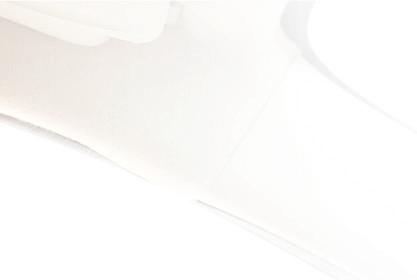

Congratulations on the new baby! While you may be overjoyed, your other kids may be feeling mixed emotions.
It’s important that parents discuss with their older children how the baby can’t do things independently and requires more attention. Some extra special hands-on projects with a parent or other adult family member can be especially valuable.



Cooper & Kid makes the acclaimed Cooper Kit, an award-winning activity kit for dads and kids to do together. Cooper & Kid does all the prep work! Plus, the Cooper Kit integrates character building to impart virtues, values, life skills or emotional skills. Kits include 5 unique activities, a bedtime storybook, a cookbook and more! Perfect for busy families with kids ages 5+, and they make it easy by sending a new award-winning box every 3 months.

Get the Cooper Kit at Cooperandkid.com Special for Healthy Mom&Baby families, use code HMB10 for $10 off your first kit!


Being a new dad can be tough on even the strongest person. And just as new mothers can suffer from postpartum depression (PPD), so can new fathers.




Some 10% of men suffer from Paternal Postpartum Depression, or PPPD, according to the Journal of the American Medical Association.
How many times have you heard the phrase, “Man up”? at’s what makes paternal postpartum depression difficult. Men are supposed to be “tough”—not sad or depressed. Men even feel ashamed to be sad or depressed; they don’t want to talk about their feelings. But it’s important for new moms to know how dad is feeling.
Dads: Find other men who you can talk to. With the right support system, being a new father can be a wonderful experience. Find support among family, friends, nurses, dads meet-up groups, work colleagues, or wherever you relate to other guys.
Dad, you need time for yourself, and time at work isn’t “me time!” Let family and friends watch baby
while you and mom take a break. ink about those things that help you relax and make it easier for you to care for your family.
Self-care is a gift you give your baby and partner. Also, spending time caring for and nurturing your baby builds your confidence, boosting those good feelings that offset doubts and insecurities all parents feel.




Mom, your partner wants to be able to support you and your needs. Just as you need that support, so does your baby’s dad. Listen and watch for subtle clues and changes with your partner. Is he withdrawing from you? Baby? Suddenly difficult to talk to? Not eating? Even though sleeping might be tough for both of you now, significant changes in sleep are important to notice. Together, with communication and the good support you both need, you can transition into the demanding but incredible roles of parenting.

Losing sleep; struggling to get good sleep

Feeling left out of mom and baby’s connection activities

Feeling stressed about becoming a dad
Difficulties in your relationship with baby’s mom
Withdrawing from mom and/or baby
Lack of a support group, including family and friends
Limited resources such as financial problems
Losing or gaining weight
Using drugs or alcohol to cope
History of depression
Source: Postpartum Support International
 ELIZABETH “LIZ” ROCHIN, PHD, RN, NE-BC, is vice president of nursing at AWHONN: The Association of Women’s Health, Obstetric & Neonatal Nurses, the organization that publishes Healthy Mom&Baby.
ELIZABETH “LIZ” ROCHIN, PHD, RN, NE-BC, is vice president of nursing at AWHONN: The Association of Women’s Health, Obstetric & Neonatal Nurses, the organization that publishes Healthy Mom&Baby.

























After vaginal delivery, many experience swelling, pain and soreness in the vaginal and rectal area. This may be caused by a tear, an episiotomy, or from hemorrhoids developed during pregnancy and labor. Constipation can be another side effect of childbirth, both vaginal and C-sections, that causes rectal irritation. Chances are going to the bathroom after delivery will be uncomfortable and proper care will be important.

Tucks Medicated Cooling Pads soothe the burning and itching caused by hemorrhoids, as well as vaginal and rectal discomfort associated with pregnancy and childbirth. The mild witch hazel formula and soft pads are effective at gently cleansing sensitive areas, and they can also be used as a moist compress to calm inflamed tissue.

Whether you experience pain during pregnancy or after childbirth, don’t let hemorrhoids or perineal tenderness take over. Trust Tucks to provide immediate relief.




www.tucksbrand.com





























 GOOD SELF-CARE DURING
GOOD SELF-CARE DURING
If you’ve never experienced cesarean, the recovery process can be somewhat of a shock. Cesarean is major surgery; you’ll need at least 4-6 weeks for your incision and body to heal—and that’s while taking care of your newborn!
During this time, your body won’t be up to full strength, and you’ll be feeding and caring for your newborn pretty much around the clock. Support from your partner, family and friends is essential during this time, as is good self-care.
As you might imagine, vacuuming or cleaning bathrooms is off the list for you. And although we all wish for this every day, when such restriction happens you may begin to feel like you’re unable to maintain your home, and with that can come guilt or embarrassment. If you can aff ord to do so, hire someone to clean your home during your recovery, or ask family and friends to help with housekeeping tasks. Otherwise, simply disregard how messy your home gets; it’s okay, it can wait, and the people who care about you won’t judge you.
Great self-care begins with being patient with yourself; you’re healing. People will typically step up when you ask them for help; it’s as easy as saying, “Hey, can you help me with . . .” is really helps ease stress during recovery. Many people want to help but they don’t know what you need, or what would be helpful to you. is is where you can help others help you.
Did I mention you’re tired? All women who birth feel tired and get little, if any, sleep in those fi rst few weeks after baby arrives. If you’ve had a cesarean, your body has the added burden of recovering from major surgery. Great self-care begins with accepting help as a sign of strength— you recognize that you need to put yourself fi rst, and baby too, if you’re both going to recover well: Let someone else clean your house, do your laundry

If you’re at risk for or planning a cesarean birth, prepare by asking your partner, family members and others in your life how they may be able to help you recover post-birth.
Learn if your partner is eligible for paternity leave, how much time that may include, or who else among your family and friends may be able to help as well. You’ll be recovering from major surgery while also caring for a newborn. Realistic expectations are that you can care for you and your new baby during this time, and little else, especially cooking, cleaning or parenting other children.

B Accept offers of meals from friends, family
B Schedule others to care for your older children or pets
B Ask those around you to hand you the baby, rather than you lifting baby, for the first couple of days
B Use counter-pressure via a soft pillow against your incision site when getting up or down, coughing or using stairs
B Take short, slow walks to improve circulation and your recovery; ask your partner or a friend to lend an arm for support as you grow stronger
B Delay exercise and relations with your partner for 6-8 weeks; listen to your body and provide it the rest it needs
After cesarean, you’re typically restricted from driving for 2 weeks, and as long as you are taking pain medication that can impair driving. Identify who will drive you to baby’s follow-up appointments, and to the store for food and infant care supplies.

Your lifting is limited to 10 pounds post-cesarean. Too much stress or strain on your incision and you risk it opening. Do the math: If you have an 8-pound baby and put them in a 2-pound car seat, plus shoulder the baby bag, you’re at the max weight you can lift, or maybe even more. Don’t try to lift everything at once. Ideas for modifying lifting during recovery include:
B Prepare the car seat by snapping it into its base before bringing baby out to the car
B Put your baby bag, purse, etc., into the car before bringing baby to the car
B Break any lifting activity down into smaller, lighter steps, such as carrying handfuls of clothes to the laundry versus a full basket
You may be restricted from using stairs postcesarean because it can put unnecessary pressure and strain on your incision. Then there’s the added falling risk at a time when you’re not getting much sleep as a new parent as pain medication can make you drowsy. Falling down the stairs is especially dangerous after surgery. Tips to move around a home with stairs include:
B Plan to recover on the main floor, or a part of your home where you have to use as few stairs as possible
B Keep everything you need, and that baby needs, within arm’s reach in your room
Heat H er Watson, Bsn , M sn , is a senior research nurse at Johns Hopkins University.
As you recover from cesarean, alert your care provider if you have any of the following:
X Redness or swelling in your legs or around the incision
X Fluid or pus from the incision site
X Incision pain
X Fever (more than 100.4 ᵒ F)
X Smelly vaginal discharge
X Heavy vaginal bleeding
X Breathing problems
X Sudden pain at your incision, or pain in your chest or breasts
X Feelings of sadness, low mood, depression or hurting your baby


Your baby needs at least a full 40 weeks of pregnancy to grow and develop. Inducing labor even a week or two early is associated with a host of risks, including prematurity, cesarean surgery, hemorrhage and infection.
While it may seem convenient for you or your health care provider, labor should only be induced for medical reasons.
Your baby will let you know when she’s ready to come out, so give her all the time she needs: at least the full 40 weeks.

Nearly 800,000 cord blood units are in public banks, and more than 5 million samples are stored in private banks.
What was once a promise of potential future treatment is now more mainstream than ever before with both cord blood stored privately or donated to a public bank.

Since the first umbilical cord blood transplant in 1988, using stem cells taken from umbilical cord blood to treat diseases has grown considerably. Umbilical cord blood can be used to treat more than 80 blood-borne cancers and other diseases, and to date more than 25,000 patients around the world have received cord blood transplants. What started as a promise of future treatment is a mainstream occurrence now more than ever before.
Primarily, stem cells can regenerate a person’s blood or immune system. After transplant into a patient, the stem cells move to the person’s bone marrow where they multiply and regenerate cells, creating a new blood and immune system.
Still, despite advances in research and therapies, most pregnant women don’t save or donate their baby’s cord blood or placenta. According to the non-profit Save the Cord Foundation, of the 4 million births in the US each year, 97% of women don’t donate or bank their child’s cord blood and it’s discarded as medical waste.
At birth, you have an option to save and bank—or donate—your baby’s cord blood, which is the blood left in baby’s umbilical cord and placenta post-birth. Both the blood and the umbilical cord tissue contain stem cells, and stem cells have the potential to change into various types of specialized cells, like nerve, skin, muscle, and blood cells.
Cord blood is useful to help family members as well as others, especially if you donate your cord blood and placental tissue to a public cord blood bank. To date, cord blood stem cells have been useful in treating many cancers, immune deficiencies and genetic disorders, such as sickle cell disease, leukemia, and lymphoma.
Stem cells treatments can be advantageous over bone marrowbased treatments as they can be used within a wider group of people than bone marrow, which generally requires a perfect match between the donor and recipient.
Among current advances, cord blood stem cells are helping regenerate injured cardiac tissue after a heart attack, and research is progressing with what some describe as “great promise” on
the use of umbilical cord blood as “regenerative medicine.” In regenerative medicine, stem cells hold the promise of being used to treat different neurological diseases and complications including potentially reversing impairment caused by Alzheimer’s disease; minimizing traumatic brain injury; repairing spinal cord injuries; and treating autism spectrum disorder, cerebral palsy, hearing loss, and diabetes, to name but a few.
As the number of potential therapies continues to increase, more healthcare experts are encouraging parents to save or donate their baby’s cord blood and placental tissue. Donating to a public cord blood bank means your baby’s cord blood is available to anyone in need or for research.

Experts writing in the journal Nature caution pregnant women to plan ahead if they want to bank or donate their baby’s umbilical cord blood, as this requires completing paperwork and arranging with the hospital where you plan to deliver your baby to facilitate the donation at birth.
Cord blood research began nearly 50 years ago, and the first cord blood banks began in 1988, still experts don’t know how long the cryogenically frozen stem cells will last in storage. To date, stem cells stored since cord blood banks began have been successfully used for treatments in both donors and others, say experts at Save the Cord Foundation.
Most public banks accept cord blood bank donations without charge, although the hospital where you’re birthing may charge to collect and manage the donation. Private banks typically charge an initial storage fee plus annual maintenance fees, and may charge for collection kits and shipping.
Many people bank umbilical cord blood for private use in the event their child or a family member develops a disorder treatable with umbilical cord blood transplant. As you make decisions related to your baby’s post-birth cord blood and placenta, consider that the American Academy of Pediatrics estimates that the likelihood of using your baby’s cord blood for a disease they develop later in life is 1 in 200,000. The journal Bone Marrow Transplant reports public banks have released approximately 30 times more umbilical cord blood units for therapy than private banks.
B Do you have a family member with a disease treatable with cord blood transplant? Some private cord blood banks offer banking for little or no cost to eligible families
B Do you want to donate to a public cord blood bank? You may be helping someone who needs a stem cell transplant. Learn if the hospital where you will give birth participates in a public cord blood bank, or how to donate to a public hospital at savethecord.org
Saving your newborn’s stem cells at birth provides the opportunity to protect your family’s health for a lifetime. Today, stem cells from cord blood have been used to successfully treat more than 80 conditions, and researchers are rapidly uncovering these cells’ powerful potential.




































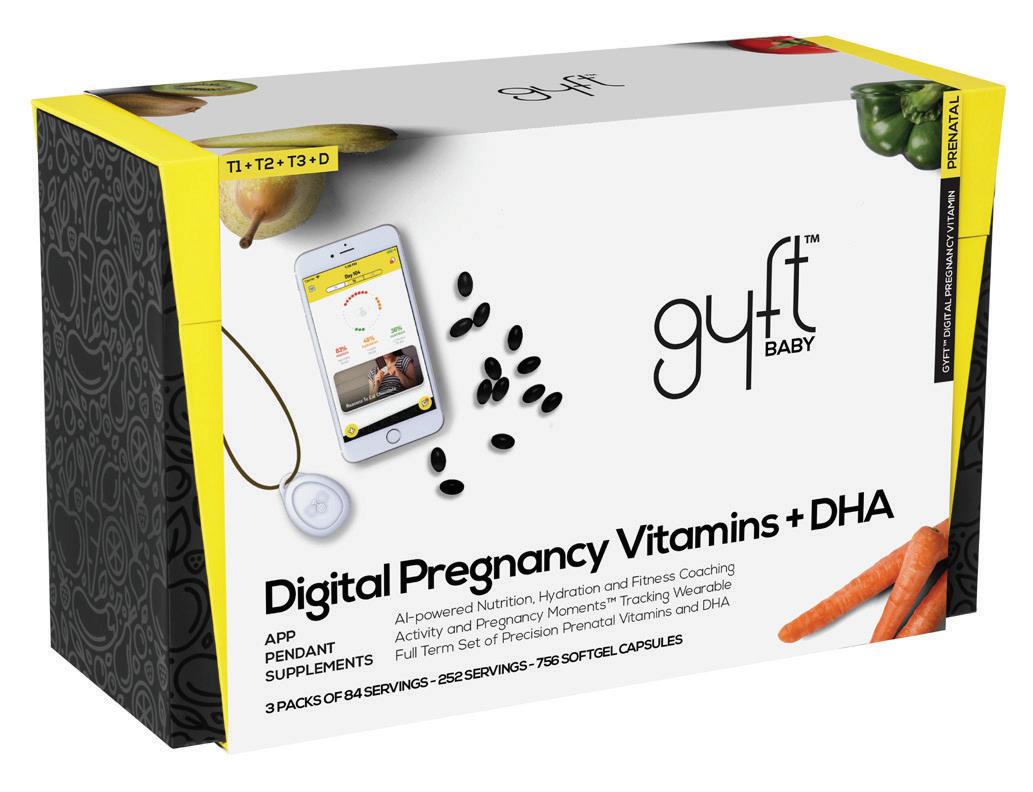


Every mama has a unique experience, from morning sickness to sleep patterns and weight gain. Researchers at the National Institutes of Health want to learn more about pregnancy in general by collecting information right from the source—moms like you!

Through PregSource, a crowd-sourced pregnancy data hub, you can chart the various aspects of your pregnancy and access expert-authored information on what to expect, childbirth and child development, including resources from the nurses who create Healthy Mom&Baby



By sharing details of your pregnancy via online surveys, you’ll inform future research to help moms and babies; you’ll also learn more about how your own experiences line up with other mamas across the country. All personal information is removed from data before it’s shared with researchers. Sign up at pregsource.nih.gov.











Growing another human got you feeling tired? Not only is a nap necessary to keep you feeling refreshed, it could also mean a healthier birth weight for baby! In a study of women in China, researchers found that women who took naps (roughly 1.5 hours) were 29% less likely to have a baby with low birth weight—and those who reported napping 5-7 days per week had a 22% lower chance of low birth weight. What are you waiting for? Hit the hay!
Emphasizing the fact that there’s no safe amount of alcohol during pregnancy, pediatricians are warning parents-to-be that most cases of fetal alcohol spectrum disorder (FASD) go undiagnosed. In fact, the experts at the American Academy of Pediatrics say that in a study of 4 communities across the US, 222 children were found to have FASD—yet only 2 of those had already been diagnosed.
FASD is entirely preventable: By abstaining altogether from drinking alcohol during your full 40 weeks, you can eliminate your baby’s risk for FASD.


Most women know their body needs more nutrients during pregnancy. Perhaps you assume you can get all of these nutrients in a prenatal vitamin, but there’s good reason to get these nutrients from our food. Whole foods contain nutrients that often work together; for example, the choline in egg yolks enhances your body’s use of DHA, an important omega-3 fat.


Many traditional cultures have specific “fertility foods” foods rich in nutrients required to support baby’s development and mom’s health during pregnancy, birth and healing while producing nutrient-rich breastmilk.
Maybe you’ve been advised to avoid fi sh
because of potential mercury exposure, yet research shows:
Mercury in fi sh is not well-absorbed (thanks to the mineral selenium in most seafood)
e latest science shows the nutritional benefits of fi sh far outweigh mercury exposure
Smaller fi sh have the lowest levels of mercury (think sardines and salmon instead of tuna or swordfi sh)
Mothers who consume more seafood have infants with overall better brain development
Buy wild-caught fi sh since farmed fi sh is often contaminated with PCBs, dioxins, and other unwanted chemicals
Cold water fi sh are especially rich in the brain-boosting omega-3 fat DHA. Fatty
fish including salmon, herring and sardines (plus fish eggs or “roe”) have the most concentrated sources of DHA; these fish are also low in mercury.
Fatty fish and seafood are also rich in vitamin D, a nutrient most pregnant women need, as well as trace minerals including iodine, zinc and selenium.
In pregnancy, you need 50% more iodine for normal thyroid function, yet deficiency is common.
According to the Journal of the American Medical Association, “Iodine deficiency remains the leading cause of preventable intellectual disability worldwide.” Consuming seafood—in particular, seaweed, scallops, cod, shrimp, sardines and salmon—is a great way to get needed iodine.
Iodine is also necessary and essential for healthy brain development.
The Incred I ble, e d I ble e gg Eggs are an incredible superfood, a super
source of protein, and full of vitamins and minerals commonly lacking in a prenatal diet. Egg yolks are rich in choline, which promotes normal brain development and prevents neural tube defects. Getting enough choline during pregnancy boosts baby’s brain and memory function.
A recent well-designed prenatal nutritional study tested the effect of consuming choline at 480 mg per day compared to 930 mg per day on infant brain development. Infants were tested at 4, 7, 10 and 13 months of age. Reaction time was significantly faster at all time periods for infants born to mothers in the 930 mg/day choline group. Current choline recommendations are 450 mg/day, but as research expands in this area, it’s likely we’ll see these recommendations increase.
Egg yolks have the most choline compared to any other foods (roughly 115 mg per egg yolk). Unless you’re allergic to eggs, eat them regularly—including the yolk.
Choline works with the omega-3 fat DHA, enhancing how much DHA enters the cells. Egg yolks also boast high amounts of folate, B vitamins, antioxidants (including lutein and zeaxanthin, which are crucial to eye and vision development), and trace minerals (notably, iodine and selenium).

When it comes to eggs, quality counts. Eggs from pasture-raised chickens (outdoors, in grass, pecking at insects, enjoying sunlight) are particularly healthy and more nutrient-dense with higher levels of DHA and vitamins A, E and D than conventionally produced eggs.
dark l eafy g reens Green, leafy vegetables are nutritional powerhouses. Researchers have identified 45 different flavonoids (an antioxidant)
in kale alone. Greens are one of the most abundant sources of folate. They also contain vitamin C, beta carotene, fiber, many B vitamins, and trace minerals.
Vitamin C works with amino acids and other nutrients to maintain normal collagen production, which supports your baby’s growth as well as your tissues (like your growing uterus and the everexpanding skin on your belly).
Greens are rich in vitamin K1, which plays a crucial role in normal blood clotting—something that can lower your risk of postpartum hemorrhage. Leafy greens also help prevent or ease the severity of morning sickness in some women through high levels of vitamin B6 and magnesium. They’re also rich in potassium, a key electrolyte that helps you maintain normal blood pressure and prevent swelling.
The nutrients in all vegetables, especially the antioxidants and fat-soluble vitamins, are best absorbed when you eat them with some fat, so don’t be shy about eating grass-fed butter, coconut oil, olive oil, avocado, nuts or other healthy fats with your vegetables.
Some nutrients are better absorbed in raw veggies (like vitamin C); others are enhanced when vegetables are cooked (like beta carotene). So, I recommend eating a combination of cooked and raw vegetables.
LiLy NichoLs, RDN, cDE, is a registered dietitian/nutritionist, certified diabetes educator, researcher, and author with a passion for evidencebased prenatal nutrition and exercise. Her second pregnancy nutrition book, Real Food for Pregnancy , is an evidence-based look at the gap between conventional prenatal nutrition guidelines and what’s optimal for mother and baby. Learn more at realfoodforpregnancy.com

Changes to your breasts begin even before you know you are pregnant! They can be startling, but don’t worry, these changes are normal with pregnancy. Here’s what you can expect during and after your pregnancy.
1st trimester: Breast and nipple tenderness is an early sign of pregnancy. Your breasts are getting larger because of the extra hormones and blood flow of pregnancy. Even the surface veins of your breast may darken and become more visible. Your breasts may feel tender or painful, similar to how your breasts feel before your period.
The nipples and areola (area around the nipples) may darken in color. You may also see small bumps emerge around the nipple, which is a good thing. These Montgomery’s Tubercules (also called areolar glands) produce antibacterial oils that moisturize, protect and help prevent skin infection.
skin can’t stretch enough to accommodate the rapid growth. Moisturizing can help prevent itching and dryness but not stretch marks, sorry!
Your baby will first receive colostrum from your breasts. A day or two later, your milk will come in. Post-pregnancy, as your estrogen and progesterone levels decline, the milk-making hormone prolactin will rise to begin making milk for baby. Milk production is a supply-and-demand system, the more milk that’s removed from the breasts, the more the body makes. Try to nurse baby on each breast at each feeding, and nurse as often and for as long as baby is hungry to build a strong milk supply.

m anage e ngorgement
B Nurse baby as often as the baby is interested (every 2-3 hours) in the first 4-5 days after birth
B h and-expressing or pumping a little milk before each feeding can help soften the tissue and allow for easier latching
B Warm wash cloths placed to the breast or a warm shower can help ease fullness as well
nd trimester: You may need bras with larger cup sizes; always go for support, comfort and the possibility of needing a large cup size as you continue through pregnancy—some moms even opt to wear nursing bras in pregnancy because they can accommodate changes in your breast size when nursing as well. Your body will start making colostrum—that immunorich milk that will sustain your baby in their first days.
3rd trimester: Your breasts likely feel full and heavy; you may even notice stretch marks. These happen when the
If the fullness in your breasts becomes uncomfortable, or if the tissue gets stretched so tight it’s difficult for baby to latch, hand express or pump milk from your breasts to relieve this discomfort called engorgement.
Your partner may be unsure of how to handle your breasts postpartum; reassure them there’s no problem with touching or stimulating your breasts and nipples. If it feels good, go for it! If it doesn’t feel good, don’t involve the breasts or nipples in sex play right now.
You may find your nipples are extra sensitive and delicate during lactation. Talk to your partner about what you want and don’t want. Also know that while
Even if you’re not planning on breastfeeding, your body will still try to make milk for your baby. Your body begins to learn that since you’re not nursing baby, you don’t need to make milk, and it starts to secrete prolactin inhibiting factor (PIF) to stop milk production.
As long as you avoid expressing milk from your breasts, your body will shut down lactation in about 7-10 days. If you’ve been breastfeeding, though, it will take longer for your body to stop making milk. Use the supply-and-demand nature of milk production to discourage your breasts from making milk:
B Wear a comfortable, supportive, snug bra at all times until milk production stops
B Avoid any nipple or breast stimulation that would cause your breasts to release milk as this will encourage your body’s milk-making
B Cool your breasts with cold compresses to ease discomfort (a bag of frozen vegetables or a sports cool pack wrapped in a damp cloth)
B Take an over-the-counter pain reliever as needed like acetaminophen or ibuprofen for pain during fullness
you’re making milk, your estrogen levels remain low, which means little-to-no vaginal lubrication with arousal, so be sure to have a water-based lubricant handy.
Be prepared for the fact that you may leak breast milk with any nipple or breast stimulation, especially with orgasm. The hormone that allows milk to let down when your baby nurses is the same one that skyrockets with orgasm.
You may even notice lumps in your breasts after baby’s birth; most often, these are either milk-filled cysts or benign breast tumors. Talk to your healthcare provider if they feel hard or don’t resolve within a day or so on their own.

Once you wean your baby, you’ll stop making milk. Your breasts will likely become suppler yet less full than before you were pregnant. You may return to the same bra size or you may need a different size. You may be worried about the changed appearance of your breasts. This is a common and normal concern. This is a time to be kind to your body. After all, your body has worked hard to develop, protect and nourish your baby.
Vicki A A berg, PhD, r Nc , is an associate professor of nursing at Seattle Pacific University.


















“It’s crazy to think of all the milk I leaked (and wasted) with my first son 3 years ago. My milk saver arrived on the same day my milk came in with this birth, and in 4 days I’ve saved over 30 ounces of milk already!” - Jennifer M. Check out more reviews at: fairhavenhealth.com









Use comfort techniques from childbirth class. Most classes teach comfort activities for use in labor, like walking, counter pressure or even a snug hug via a shawl. Practice these actions before labor begins so that you’re already comforted by them.

Breathe! Next time you’re in an uncomfortable or stressful situation, practice breathing that relaxes and calms you—this may not be the same technique for everyone. Stuck at a long red light—just breathe!
Get rolling. Sitting on an exercise ball in early labor keeps you upright and working with gravity, opens your hips letting baby move down, and creates an easy rocking rhythm that’s comforting in labor. Bonus: Use the ball postpartum when you’re ready to exercise.

Bring the heat! Take a hot shower or bath, or use warm compresses or heating pads. Heat relaxes your muscles without interfering with labor.
Laboring at home is a safe and effective way to get into a good labor pattern before going to where you’ll birth. Get ready for labor and increase your chances of having a positive birth experience with these popular early labor tools. Post these tools wherever they’ll remind you to practice them before real labor begins!
Early labor is when your cervix dilates from 0-3 cm, but how do you know when that is? In early labor, your contractions likely won’t fall into a pattern, and they won’t last very long—so there’s little that the nurses where you’ll birth can do for you that you can’t do for yourself at home.
Early labor is over when your contractions are 5 minutes apart, lasting 1 minute each for at least an hour, and they don’t stop if you lay down or eat or drink something. When this happens, get going to where you’ll give birth.
Still, every labor is unique, and these are guidelines. If you feel you need to get to a healthcare facility, go!
Eat something. Labor is work; fuel your body. Choose mild, simple foods like soup with crackers, pasta, or a peanut butter and jelly sandwich. Choose what satisfies you without upsetting your stomach. You may not feel hungry, but it’s still important to eat a little and stay hydrated during labor— it’s a marathon, not a sprint.
Rest and relax! Early labor can take a while: Watch a movie (on your exercise ball part of the time) or nap.
Heat H er Watson, Bsn , M sn , is a senior research nurse at
Johns Hopkins University.Labor isn’t the most comfortable thing you’ll ever experience, but when you prepare to use the power of your contractions working with your body to birth baby, you’ll begin to see the pains of labor in a whole new way.BY CAROLYN DAVIS COCKEY, MLS, LCCE

Would you want to know if you’re at risk for birthing early? While most pregnant women eagerly await those fi rst contractions, anxious to fi nish the marathon of pregnancy, when baby comes early many moms feel unprepared for the realities of prematurity.
“My son Elijah was born after only 30 weeks and spent 91 days in the neonatal intensive care unit (NICU). I felt so alone and unprepared,” said Southern California mom Lucy Loomis. “No one in my immediate circle of family or friends had experienced a preterm birth—I didn’t know who to turn to for advice. It would have been great to have known during my pregnancy that I was at risk for a preterm delivery.”

Lucy would have used that information to prepare for what ultimately became her journey toward the birth of her son: extended periods of bed rest for Lucy and NICU-level care for Elijah. “When I got to see him for the fi rst time, of course I couldn’t hold him as he was still intubated, and he had all of these monitors attached to him. at was very hard,” Lucy recalls.
“ ere was a lot of fear. I did not know what to expect; was he going to be okay? It was a very scary time for my husband and myself. I found ways to encourage myself, like engaging with the nurses and other moms on the unit. ey would ask me how I was doing and that played a big role in how I felt too because they were so nice to me,” Lucy recalls, acknowledging that during this time she also had the extra stressor of a young daughter at home to provide care for as well.
“ e information would have been useful to prepare for my pregnancy and delivery journey, including the possibility of being on bedrest for a long period of time, or that my baby might need to be
intubated. It would have alleviated some of the fear, trauma and anxiety that I went through,” she says.

What you would do if your baby was born early— premature—weeks or more before their due date? How would you manage your job? Current family obligations? One in 10 babies in the US are born before term (37+ weeks), according to the CDC, and half of these births are among pregnancies with no apparent risk factors for prematurity, according to the New England Journal of Medicine Truth is, expecting parents aren’t well informed about the risks of preterm birth but want information from their healthcare providers to prepare and educate themselves, according to a survey conducted by San Diego-based Miracle Babies Foundation, a nonprofit organization that supports NICU families and Sera Prognostics.
In the survey, “Premature Risk Education to Empower Moms-to-be with Information Early” (PREEMIE), parents told researchers they want to learn: If their baby is at risk for prematurity based on risk factors associated with premature birth, including previous preterm birth, prior miscarriage, carrying twins or multiple babies, IVF, family history, and health and lifestyle factors, among others (95%)
at premature birth is the #1 cause of infant death and illness (77%) at women without risk factors account for up to 50% of preterm births
account for up to 50% of preterm births


A new survey suggests parents want to know the risks of prematurity affecting a current pregnancy, as well as information from their healthcare providers about the complications of baby being born early.
Even if their pregnancy care provider can’t prevent preterm birth, most parents want to know if they would ultimately birth their baby early (97%). Yet, more than half of parents said they never discussed the possibility of prematurity with their pregnancy care provider.












Following a premature birth, especially with an extended NICU stay for baby, moms “can feel isolated and alone; their life is turned completely upside-down,” says Dr. Sean Daneshmand, founder of Miracle Babies. He encourages women to ask their pregnancy care providers about preparing for a possible premature birth. “When a baby is born premature or with medical complications, that family’s life changes drastically,” he shares. “Stress becomes a near constant emotion, difficult decisions must be made, and life in the NICU becomes a reality.”


Miracle Babies provides Southern California families with fi nancial aid for transportation, childcare and other needs families have when confronted with prematurity. “We provide them with care bags because the simple things really matter: A toothbrush, a Kind™ bar, lip gloss . . . many simple things a mom would need when they’re in the NICU,” Dr. Daneshmand says, recounting how this simple kindness has a lasting impact.
Beyond those “simple kindnesses,” Dr. Daneshmand has one message for moms and their families: Ask your pregnancy provider about your risks for prematurity, and be ready and informed should you experience what 1 in 10 parents go through every year when their baby is born early.






Babies suck. And sometimes breastfeeding hurts. We all know that “breast is best.” In fact, most new and expectant moms in the US choose to breastfeed.

But the simple fact that it is healthy and natural doesn’t mean that breastfeeding is easy— or painless! Managing the pain and difficulty of those early days is essential to meeting your breastfeeding goals. I’d like to start by dispelling a few wellmeaning but sometimes damaging comments that I’ve heard during my career as a nurse and a lactation consultant.
This is a classic example of blaming the victim. True, when breastfeeding is going well, it’s comfortable for both mom and baby. in fact, it can even feel good! However, there are at least 2 people in this breastfeeding relationship: Mom and baby. Just because mom is doing it right, doesn’t mean baby is. Don’t blame yourselves if breastfeeding hurts. Blame the baby and get some help!
Gah! Nobody can see what’s going on inside the baby’s mouth while they’re nursing. The baby’s lips might be flanged and the mouth might be wide, but if the tongue isn’t positioned correctly or if they are using their gums to stay latched, it can still hurt. s peak up for yourself! If it hurts, say so!
The truth is, breastfeeding can be painful for the first few weeks until you and your baby both get good at it. There is definitely a learning curve here, and the faster you and your baby master this new skill set, the faster the 2 of you can get on to enjoying your nursing relationship. Getting you started and continuing right with nursing that is exactly what your nurses and lactation consultants are there for!
Nipples do not “toughen up.” They get longer. sometimes there can be a latching pain that lasts about 10-20 seconds as babies stretch the nipple deeply into their mouths. in these cases, breastfeeding is only uncomfortable for those initial seconds, but then the rest of the nursing session feels fine. That “latching pain” doesn’t typically last for more than 2-3 weeks. once your nipples lengthen (or evert, in the case of flat and inverted nipples), the stretching sensation will become a thing of the past.
“If you’re do I ng I t r I ght I t shouldn’t hurt.”
“ t hat latch looks good to me. a re you sure I t hurts?”
“Breastfeed I ng I s just pa I nful.”
“It’s go I ng to hurt unt I l your n I pples toughen up.”





 BY SHARI CRISO, RN, CNM, IBCLC
BY SHARI CRISO, RN, CNM, IBCLC

Many moms don’t understand that a breast pump and nursing supplies are available to many under the Affordable Care Act.
You may be planning on nursing your baby, but do you also know how to gain breastfeeding support and supplies under the Affordable Care Act (ACA)? A recent survey showed that most moms (82%) don’t understand the breastfeeding-related benefits available under the ACA. Unfortunately, this survey shows we’re missing the mark when it comes to making sure moms are set up for support and success in nursing their babies.


Signed in 2010, the law requires insurance companies to provide access to a no-cost breast pump as well as lactation consulting sessions. e ACA also requires many employers to provide a clean, private space to pump that is not a bathroom— plus breaks for mom to express her milk.
Conducted by Wakefield Research for Byram Healthcare, the survey asked 1,000 expectant mothers about their knowledge regarding specific benefits—and the fi ndings reflect what I often see in my own practice as a lactation consultant and educator:
of moms don’t know breast pumps are covered at no cost
of moms don’t know consultations with a lactation consultant are covered at no cost

of moms don’t know employers must provide breaks for mothers to pump milk

As a lactation consultant and educator, I see these breastfeeding benefits as the best-kept secret of the ACA. e low awareness could be related to general confusion about the law. Many mothers falsely believe they can’t obtain the pump they want through their insurance.
So what steps should an expecting or new mom take to access her benefits?
Contact your insurance company to order a breast pump through them You can order a breast pump as soon as your healthcare provider has given you a due date even if your insurance company won’t provide the pump until closer to baby’s birth Most health plans provide coverage for the majority of topquality, brand-name pumps


Don’t hesitate to call your health insurance provider and discuss your benefits related to breastfeeding, asking about pumps and other nursing supplies. Take a breastfeeding course, visit a lactation support group, and talk with other moms. Making you and your baby your priority now will set you up for future breastfeeding success.
SHARI CRISO, RN, CNM, IBCLC, is a certified nurse midwife, lactation consultant and breastfeeding educator.Wooden teethers are a safe and natural relief for teething pain.












At Aspen and Maple, we aim to give your family safe, quality products that you can be comfortable with and your child will love.




As a new mom you are over whelmed by many daily choices


One choice that is easy to make is New Evolution Diaper Bags
These waterproof functional diaper bags allow all your babies daily important needs in one place when on the run.
Visit your friend and family go to the gym or shopping and have everything at hand.
Even better, you can recharge your cellphone and with the many pockets you can be assured that security is in place so you will not lose touch with the world or your cellphone.
Our bags come in a selection of assorted colours with added accessories like straps to connect to your stroller or wheel able suitcase, USB connection for your cellphone water proof pockets and easy useability for the new mom on the run.
New Evolution Diaper Bags allows the new mom to be in control of your new precious babies needs.




Join




 SUMMER HUNT, ELS
SUMMER HUNT, ELS

Traveling with small children can be delightfully challenging. The tiny tot docs at the American Academy of Pediatrics (AAP) offer these 10 sanitysaving, parent-proven strategies:

1. Give your family extra time to get through security. Dressing tots in easy-to-remove layers. Kids younger than 12 can keep their shoes on 2. Roll to the gate by bringing your stroller through security to gate check 3. Explain airport screening; have them hug their backpack as they put it on the scanner belt and remind older kids that any threats, even those made jokingly, can halt family travel and may even result in fines 4. Arrange to have a car safety seat at your destination or bring your own. Most airlines accept car seats without extra expense; check your airline’s policy prior to travel 5. Your child is safest on a plane secured in a properly sized, FAAapproved car seat (it needs to say that on a seat label). Belt-positioning booster seats can’t be used on airplanes; stow them in overhead bins
6. Buy your child a seat or choose a flight that’s likely to have an empty seat where your child can travel in their car seat. Kids weighing 40+ lbs can use the aircraft seat belt 7. Pack toys and snacks 8. Nurse your infant or let them suck on a bottle to ease ear pain during takeoff and landing; older kiddos can chew gum or sip liquids
9. Wash hands frequently; consider bringing handwashing gel and disinfectant wipes to prevent illnesses
10. Avoid flying within 2 weeks of an ear infection or ear surgery for your child; consult with your little one’s care provider before flying if they have heart, lung or respiratory problems
The grief a mom experiences after losing a baby to sudden infant death syndrome (SIDS) is long-lasting and differs from PTSD or depression, say experts at Harvard Medical School. They call it prolonged grief disorder (PGD)—and this different diagnosis can help parents’ healing process.
Researchers found that more than 68% of moms who lose a baby to SIDS suffered from PGD in the 4 years after their baby’s death, experiencing emotional pain or yearning every day. Grieving parents can find kindred souls and support at FirstCandle.org.

Protect your Newborn.





Here’s why the maternal-child nurses of AWHONN collect diapers, wipes and other essentials for at-risk families in their care and in their communities.

At 8 years old, my life was forever changed. My family quickly became a “single mother of 5, lowincome household.” I watched my mom struggle to meet our basic needs, including those of my twin siblings who were less than a year old. My older sister and I quickly grew into adults to help our mom. I vividly remember receiving an EBT card, trying to figure out what we could and could not purchase with it, and feeling a little embarrassed the fi rst time we used it.
I had never felt so overwhelmed, stressed and helpless. We were so appreciative for acts of kindness we received that allowed us to not think about money for a moment and be the kids we truly were.
As maternalchild nurses, we are the ones our patients confide in about diaper need. We’re the care providers who can send families home with extra diaper packs to help in any way we can.”
It was through those acts that we found hope.
Now as a nurse, wife and mother, I get to be a source of hope for struggling families in partnership with my colleagues at AWHONN, the Association of Women’s Health, Obstetric & Neonatal Nurses, the maternal-child nurses who create this magazine for the women and infants for whom they provide care.
Nationwide, the nurses of AWHONN are the largest group of healthcare providers collecting and providing diapers, wipes and other essential care items to at-risk families in hospitals and communities through the Healthy Mom&Baby Diaper Drive, which operates year-round in partnership with diaper maker Huggies™ and the nonprofit National Diaper Bank Network.
As maternal-child nurses, we are the ones our patients confide in about diaper need. We’re the care providers who can send families home with extra diaper packs to help in any way we can.
Prentice Women’s Hospital nurse Deborah Roache has collected more than 20,000 diapers with her colleagues for vulnerable families in greater Chicago.Truth is, 1 in 3 families in the US struggle with being able to afford enough diapers for their children. They reuse diapers, or delay changing them, to make their supply last. Continued exposure to urine and stool in a diaper can degrade baby’s skin, causing irritation and infection and, for many children, affect their overall mental health and development. When parents are stressed, babies are stressed.
My mother lived that struggle. When her husband became violent, she became a single mom living paycheck to paycheck; oftentimes even that wasn’t enough. “When you’re in that position, you need diapers as much as you need milk or food. It’s not a matter of should you get them, it’s how am I going to get them,” recalls my mom.
“I didn’t tell anyone that I needed help because I was embarrassed. Instead, I found myself taking my stress out on my children, and felt even worse. People on the outside don’t see the struggle; it’s lonely and hard. If you need help, ask— there are so many good people there to help. You’re not alone,” my mom said.
Diaper need creates a vicious cycle. There are no public assistance programs that provide diapers. Most daycare centers require at least a week’s worth of diapers for a child to attend, making it hard for a parent to return to work or school.
Making a Difference for Ba B ies at r isk
AWHONN member and maternal-child nurse Joan Sperger hosts diaper drives and raises awareness regarding diaper need locally and by speaking on behalf of the National Diaper Bank Network in Washington, DC.

North of Philadelphia, at Abbington Jefferson Hospital, Joan identifies families
at risk. “Our less fortunate moms ask us for more diapers when we know they haven’t used all of the diapers we’ve already provided,” she says. “And we give them more diapers because they’re insecure about their ability to care for their babies. No mother should worry about meeting basic needs for her child just because she’s getting public assistance. Diapers are not a choice; they’re a necessity.”
Chicago nurse Deborah Roache rallies colleagues at Prentice Women’s Hospital around diaper need. This mother and labor and delivery nurse of 39 years in a hospital that delivers more than 12,000 babies each year has raised more than 20,500 diapers for her community.
since the launch of Mom&BabytheHealthyDiaper Drive in 2015, aWHonn nurses have collected and donated nearly 1 million diapers to theirpatients.vulnerable

“I first became aware of diaper need in an AWHONN post asking nurses to join their colleagues in holding diaper drives. I did a little research and was shocked at the statistics,” Deborah says.
Like Joan, Deb continues to increase the number of diapers her hospital provides to the community each year. “We need to continue not only diaper drives, but educate everyone about the very real need for diapers, and the funding needed to help at-risk parents provide them for their babies.”
If you know a family struggling with diaper need or if you’re struggling to provide diapers for your youngest children, you are not alone: Nurses care, and nurses want to help. Visit DiaperDrive.org, the National Diaper Bank Network at nationaldiaperbanknetwork. org/need-diapers-now/ to find diaper banks near you, or 211.org for agencies in your area.
 Jessica Hazboun, R n , PH n , is a nurse, childbirth educator and advocate for the Healthy Mom&Baby Diaper Drive.
Nurse Joan Sperger is an outspoken advocate for eliminating the diaper gap—not having enough diapers to keep your youngest children clean, dry and healthy.
Jessica Hazboun, R n , PH n , is a nurse, childbirth educator and advocate for the Healthy Mom&Baby Diaper Drive.
Nurse Joan Sperger is an outspoken advocate for eliminating the diaper gap—not having enough diapers to keep your youngest children clean, dry and healthy.



Your baby needs at least a full 40 weeks of pregnancy to grow and develop. Inducing labor even a week or two early is associated with a host of risks, including prematurity, cesarean surgery, hemorrhage and infection.
While it may seem convenient for you or your health care provider, labor should only be induced for medical reasons.







Your baby will let you know when he’s ready to come out, so give him at least a full 40 weeks.




Most parents understand babies sleep better and longer when swaddled. It is important for parents to know when and how to transition from a swaddle to a wearable blanket. The American Academy of Pediatrics urges parents to stop restraining baby’s arms in a swaddle at three months or when baby shows signs of attempting to roll over, and to start using a wearable blanket. However, many parents feel their baby is not ready and they continue to swaddle, which increases risk of suffocation if baby was to roll over when swaddled. To bridge the gap from swaddle to sleeping sack there is a new option - the Swaddle Sack with Arms Up and Mitten Cuffs.
The Swaddle Sack with Arms Up design supports multiple natural sleep positions and partially suppresses the Moro (Startle) Reflex while providing swaddle comfort and support, and if baby rolls over, the design allows baby to use his or her arms to lift baby’s torso and reposition his or her head to get access to air. The mitten cuffs allow parents to open the cuffs, so baby can self-soothe, or close the cuffs to protect baby from facial scratches.



The Swaddle Sack is the perfect transitional swaddle and the missing step in current safe sleep programs.
3-Step Safe Sleep Care Pathway ~ from 0 to 12 months
Swaddle Sack with Wrap 0 - 3 months
• Arms Up Sleeves & Mitten Cuffs
• Keeps arms close to body
• Suppresses Moro Reflex



• Snug Fit & Hip Healthy
• Baby Can Self Soothe
• Breathable Cotton
• 2-way Zipper
Transitional Swaddle Sack® 3 - 6 months
• Arms Up Sleeves & Mitten Cuffs
• Use of Arms (if baby rolls over)
• Partially Suppresses Moro Reflex
• Snug Fit & Hip Healthy
• Baby Can Self Soothe
• Breathable Cotton
• 2-way Zipper
Sleeping Sack 6 - 12 months
• Sleeveless Wearable Blanket
• Use of Arms (if baby rolls over)
• No Suppression of Moro Reflex
• Ample Leg Room & Hip Healthy
• Baby Can Self Soothe
• Multiple Fabric Options
• 2-way Zipper
Every baby has unique sleep preferences that change as they grow and develop. The Swaddle Sack with Wrap is convertible and designed to provide flexibility, comfort, and support. For babies who prefer one arm out when swaddled, the sleeve will help keep baby’s arm warm and the mitten cuff may be worn open or closed. For babies who enjoy sucking on their hand, parents can open one or both mittens to allow baby to self-soothe. The cuffs may be closed if the caregiver is concerned about facial scratches. When transitioning from a swaddle, many babies sleep better with the snugness and unique sleeve design of the Swaddle Sack, while other babies prefer a traditional wearable blanket. It is important for parents to consider both options, so they can make the best choice for their baby. The goal is Better Sleep and Safer Sleep.
LYNETTE DAMIR, RN, CEO & FOUNDER OF SWADDLEDESIGNS, is known for her stylish, functional & innovative designs to help parents care for and comfort their baby. Please visit SwaddleDesigns.com to learn more.

Parents today are often taught to swaddle the baby’s entire body to create a tight cocoon, but did you know that this restriction of movement in the lower half of baby’s body can lead to hip dysplasia?
Hip dysplasia is the most common abnormality in newborns and occurs when the top of the femur (leg bone) isn’t properly located in the hip socket or when the hip socket doesn’t develop properly.
Each year, as many as 75,000 babies are treated for hip dysplasia in the US. Your baby may be at risk if they were:
B Born in the breech position (rump first)
B Born into a family with a history of dysplasia
B Your first-born and female; girls have greater limb looseness at birth, increasing their risk for dysplasia
How you swaddle your newborn can make a critical difference to hip development. The good news is that catching this condition early, and using proper swaddling, means the problem can usually be reversed.

Mild hip dysplasia often can’t be detected right away, and over time it causes the hip to wear out quite like a tire wears out when it’s out of balance. Often, it first shows up as arthritis in later life.
Hip dysplasia is the most common cause of hip arthritis in young women and is responsible for as much as 10% of all total hip replacements in older adults.
Incorrect swaddling can also cause the hips to dislocate. Your baby’s hip joints are flexible around the rim of the socket. Baby’s legs were folded in the womb; straightening their legs and holding them straight can put too much pressure on their immature hip joint, especially during the first 3 months. It takes about 3 months for their hips to become more stable, during which time their movement has stretched their leg muscles gradually.
Although most babies can tolerate tight swaddling that restricts leg movement, don’t take that risk. If your child was swaddled tightly, ask your pediatrician to check for dysplasia.
s waddling t ips
B Wrap a blanket or other wrap firmly around the arms but loosely around the legs, allowing the hips to move freely
B Avoid stretching your baby’s legs straight or pressing them together
B Encourage baby’s hips to be spread and bent as if riding on a horse. When carrying your baby, allow them to wrap their legs around your body for proper hip development
B Instead of a blanket for swaddling, consider using a sleep bag that has a swaddle for the arms but roomy bottom for the hips
Charles PriCe, MD, is a pediatric orthopedist at the Winnie and a rnold Palmer h ospital for Children and the director of the i nternational h ip Dysplasia i nstitute, hipdysplasia.orgSwaddling your baby can calm and soothe them as well as reduce crying and any pain they may be experiencing.
girls are 4-5 times more likely to have hip dysplasia than boys.
Your late preterm baby born between 34-36 weeks has unique care, feeding and developmental needs; they need you to be their champion.
Perhaps baby didn’t wait out those last few weeks of pregnancy before making their grand entrance in this world a little early. Babies born after 34 weeks but before 37 weeks of pregnancy are called “late preterm infants” (LPIs)—as if they could be late for being born early!
Almost all (70%) premature babies are born in this time frame. These babies may look and act like a term baby (37+ weeks), but they’re not—and they’re at greater risk for health issues, including breathing, having a healthy body temperature, low blood sugar (hypoglycemia), jaundice, problems with feeding, and developmental delays both now and in the future.

Your baby isn’t quite ready for a world with lots
of germs. Arriving early means your baby received fewer antibodies from you so they’re more susceptible to infection in the first few months of life. They’re also more likely to need hospital-level care if there are challenges with feeding, slow weight gain and growth, which may even lead to dehydration and failure to thrive.
Baby’s first checkup with their healthcare provider should be within 24-48 hours of leaving the hospital; baby will likely receive more frequent follow-up care during their first 10 days so problems with breathing, staying warm, feeding, weight gain, infection, illness and jaundice can quickly and easily be identified and remedied, reducing baby’s need for hospital-level care.
Your LPI has less body fat than a term baby, so they may struggle to stay warm. Keep them away from drafts; room temperatures should be warm
you’re baby’s greatest care provider and advocate. a s they say when things don’t seem quite right, if you see something, say something.
Contact baby’s healthcare provider if baby has any of the following:
B Temperature below 97° F or above 100.4° F (38 °C)
B Difficulty breathing or turning blue—call 911 immediately!
B Slowed or rapid breathing— babies should have 30-60 breaths/minute
B Jaundice or yellowing of baby’s skin or eyes
B Difficulty feeding , not waking for feedings or not feeding at least 15 minutes or more
B Vomiting
B No wet diapers for 12 hours
B Lethargy, floppy muscles
B Lopsided chest , or skin sucking into chest bones
B Irritability
B Changes in typical behaviors
Warning Sign S in Late Preterm i nfant Senough for baby to sleep comfortably in one more layer of clothing than you’re wearing. Don’t overdress baby or let them get overheated; a cap on baby’s head will slow heat loss.
Going skin-to-skin regularly helps baby with steady breathing, staying warm and feeding frequently. Practice skin-to-skin care for as long as you and baby desire; your partner can do this too!
Were you surprised if your nurses taught you to hand express or use a breast pump to start the milk flow for your little one? Baby may struggle to get the hang of nursing, especially sucking and swallowing at the right times and breathing, too.
Emptying a breast—or both—at each feeding is a goal for baby as they grow; at first, you may need to finish each feeding by pumping and freezing the rest of your milk. Starting the flow of your milk at each feeding and emptying your breasts after each session will help you maintain a good milk supply.
Put baby to breast at their first signs of hunger, supporting baby’s head and neck to help them get as much milk as possible. The football hold, in which you cradle baby alongside your body at breast level just like a football, can help baby feed easier.
Nurse baby every 2-3 hours, even waking baby in the night if 3 hours have passed since their last feeding. Yes, that’s as many as 12 feedings a day! Baby needs breastmilk’s antibodies to boost their immunity. Baby should sleep in your bedroom for their first full year of life—just not in your bed. Baby should always sleep in an infant-safe crib or bassinet with a tight-fitting mattress and sheet for all sleeping times out of your arms, including naps.
As baby grows, keep all recommended appointments with their healthcare provider, and ask if additional developmental care from a specialist is needed to ensure your late preterm baby gets the best possible start under your watchful and tender care.
Catherine M. h ill, MSn , Fn P-BC, is an advanced practice nurse and a nurse program development specialist at AWHONN. This article was adapted from AWHONN’s Assessment and Care of the Late Preterm Infant EvidenceBased Clinical Practice Guideline, 2nd Ed.

Your LPI can be more likely to develop jaundice, a symptom of a bigger problem called hyperbilirubinemia, which can lead to severe nervous system damage if not caught and treated early. Alert baby’s care provider if baby’s skin or eyes become yellowish. LPIs develop infections more easily; get care if baby has fever (100.4° F or more) or difficulty breathing.
Respiratory syncytial virus (RSV) causes colds in healthy infants but is more serious in babies born early. Build a protective cocoon around baby:

B Consider influenza vaccination for everyone near to or caring for baby
B Consider influenza vaccination for baby at 6 months

B Ask baby’s healthcare provider about vaccinations for RSV
B Keep baby home; avoid crowds and groups
B Breastfeed as much as possible to boost baby’s immunity
B Keep baby away from smoke and toxins
Call 911 if baby is struggling to breathe or is turning blueish.
Maybe your baby has more gadgets than toys in their nursery, but what do experts say makes a healthy smart environment for your little one?
BY CAROLYN DAVIS COCKEY, MLS, LCCE
Prepping for a healthy pregnancy? Look no further than the phone in your fi ngertips for help.
Designing a nursery with gadgets galore so even grandma and grandpa can interact with your little one from afar? It seems modern moms have tech to touch for every aspect of conceiving, pregnancy, birth, parenting and yes, even healthy vital signs.
e Wall Street Journal asked earlier this year, “Are you a bad parent if you rely on parenting technology?” No, the article concludes, you’re a typical parent. In what the New York Times calls the “over-monitored nursery trend,” tech has expanded beyond the plugged-in nursery to nearly every aspect of maternal and infant health, including pregnancy, birth and parenting.
ree out of 4 moms use technology to conceive, carry a pregnancy and equip a cozy crib for their off spring as well as monitor their every move as they grow; measure every ounce of breastmilk pumped, saved and fed; and track fertility to plan for future off spring, say market researchers from the fi rm Frost & Sullivan.
Digital tools abound in all aspects of health and parenting— fertility, pregnancy, birthing, nursing, baby health, and safety,



to name a few. And, in a techy turnabout, women are 75% more likely to use these tools to manage their health and appointments than their male partners.


Public health fears related to increasing preterm birth and maternal mortality rates are compelling women to look for reassurances beyond their pregnancy care provider to an app in hand or other device, researchers observed. Even regulators at the FDA have recently advised women to incorporate technology into their personal and family health management.


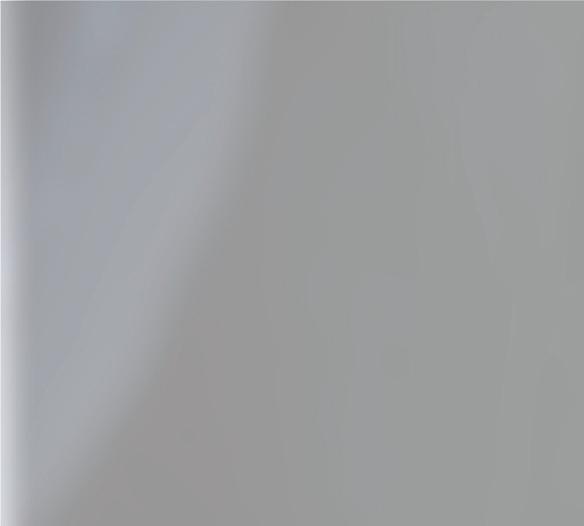
It might have started in the nursery, but today’s mother/baby digital health product choices range from wearables for home and clinical use, mobile apps, and gear for improving the management of high-risk pregnancies, infant care, and assisting busy parents.
Proceed with caution, though, as experts including those at the American Academy of Pediatrics warn that these devices and apps collect significant data, especially related to newborns, creating what could one day be a serious data security concern. Smart nurseries connect to your home’s overall smart control system, making not only your baby’s room but your whole house a potential security target for hacks and breaches.

BABY
BABY

NICU: Clinical-grade products that replace bulky devices in NICUs that can be used by baby’s nurses and medical providers to track a baby’s vitals while on the go; alerts ping care providers when attention is needed
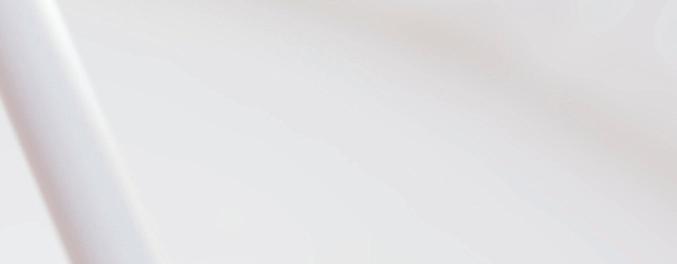




NOT EVERYTHING THAT BEEPS MAY BE WORKING Recently, researchers made headlines when they reported that two consumer baby monitors intended to check baby’s oxygen levels provided “worrisome” results, making parents question if we’re starting to rely a little much on the tech and too little on ordinary parenting skills like presence and physically supervising baby—especially since these monitoring products aren’t regulated by the FDA.
“We evaluated how accurate these monitors were in detecting low oxygen levels in infants,” said study leader Chris Bonafide, MD, MSCE, a pediatrician and safety expert at Children’s Hospital of Philadelphia (CHOP). “One monitor detected those levels when they occurred, but was inconsistent; the other never detected those levels when they occurred.” e team also evaluated pulse rate accuracy in the babies and found that the monitor that never detected low oxygen levels also often falsely displayed low pulse rates.
e consumer monitors were the Owlet Smart Sock2 and the Baby Vida, the only 2 currently marketed smartphone-integrated consumer baby monitors that use pulse oximetry, which measures oxygen saturation in a person’s blood. Last year, these same researchers counseled in the Journal of the American Medical Association that these products can create anxiety in parents with no benefits for babies.
“We...discussed the consensus in the pediatric community that there is no medical reason to electronically monitor vital signs in healthy babies at home,” said neonatologist Elizabeth Foglia, MD, MSCE and co-author from the ECRI Institute, a nonprofit research organization that evaluates medical devices and practices. “Our new study adds serious concerns about the accuracy of these consumer monitors, when we compared them to a standardized hospital monitor in a cohort of sick infants.
“If something is going wrong with a sick infant, you would want to know that 100% of the time,” added Bonafide. Especially when a monitor sounds an alarm for a non-problem: “False positives raise the possibility of unintended consequences,” said Foglia. “Parents who see an abnormally low pulse rate reading might call 911, or unnecessarily rush their baby to an emergency department” on a false alarm.
Kurt Workman, co-founder and CEO of Owlet challenged their findings: “The accuracy and performance of the Owlet Smart Sock is something we take very seriously. It is important to note that our product is designed for in-home use, with healthy babies while they sleep, to provide parents with information about their child’s wellbeing.” He added, “As the CHOP study states, one of the limitations of their methodology was not using arterial blood gas measurements. Owlet’s sensor accuracy was
tested against arterial blood gas measurements in December 2017 and the sensor performed well within industry and regulatory standards for pulse oximetry.”
tH e t re N d aH ead As technology advances, look for artificial intelligence (How does that bassinet fit with my décor? ) and even integrated telehealth with your care providers via your phone with smart health devices like thermometers and scanners (Sure doc, just let me put that scanner up to my baby’s ear for you...). The market report emphasized that the goal of manufacturers isn’t just to offer you one product but rather a full suite that integrates with your home tech systems, including a consult with baby’s pediatrician with just a few clicks of your smart phone or baby’s monitor.
What will comprise your family’s digital health management suite in the future? One trend you don’t need any technology to observe is that digital and connected health devices, wearables and tracking are now fully entrenched and will continue to play an important part in your family’s health life going forward, experts agree.
Menstrual cycles
Ovulation
Kick counts
Contractions/labor
Vital signs
Gestational weeks
Ultrasound Rx refill Education
At-home fertility tracking
Menstrual cycles
Ovulation
Hormone levels
Fertility monitors
Connect to care provider
Fetal heart rate
Contractions, labor
Vital signs
Prenatal tracking
Ultrasound
Feeding times Pumping data
Healt H
Height, weight Sleep patterns
Diaper changes, sensors Wireless thermometers

Infant location
Infant activity Baby position Sleeping position
Fetal heart rate
Contractions, labor
Vital signs
Ultrasound
Feeding times, quantities
Hands-free, wearable in-clothing pumps
Feeding times Milk volume
Infant heart rate Breathing Height, weight Oxygen levels
Sleep patterns Temperature Diaper changes
Diaper changes Room temperature
Lighting, sound Humidity
Connect to care provider
Communicate to infant
Infant location
Infant activity Baby position Sleep position
Thermometer patch
Infant location
Infant activity Baby position
Sleep position
Fertility Nursi N g sa F ety Preg N a N cydesigned by doctors double-sided 100 x 150cm surface area 5cm of thick soft padding multi sensory toys




water resistant machine washable plastic detachable sheet for messy play folds for storage


Imagine this: your child is happily playing in the living room when the phone rings. You take your attention from your baby for just a few minutes while you chat with the caller.
When you return, it’s your worst nightmare: your child is lying there, unresponsive, after suffering a shock from the electrical outlet. If this sounds like a rare scenario, think again. In the last decade, over 24,000 children under age 10 went to the emergency room for an accident involving an electrical receptacle. That’s seven children a day.
Protect your child with the help of an outlet safety device like Plug Perfect. Plug Perfect is a fail-safe device that completely secures dangerous outlets from prying fingers.

Simply screw on the Plug Perfect over your existing outlet plate and snap on the clips. Your child won’t be able to stick their fingers in the outlet or pull cords out of the wall, preventing the risk of first and second-degree burns. Plus, the slim profile allows Plug Perfect to fit any area unnoticeably.
Try the Plug Perfect today to get the peace of mind you deserve.








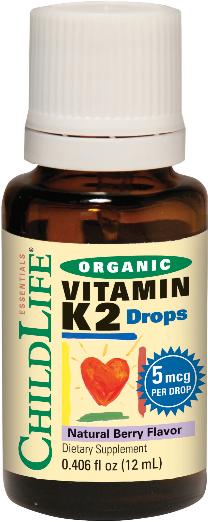








Universally, babies all over the world typically cry every day from birth on—so what’s normal or not?
Nature designed your baby’s cry to get your attention! Maybe baby is hungry, thirsty, uncomfortable, or having gas or in pain. Maybe baby is lonely and wants to be held and loved. Heck, just a change in routine, a new experience or feeling tired is enough to make most babies cry. So how much crying is normal? Research indicates that most babies cry roughly: 2 hours a day in their first 2 weeks 2 hours and 15 minutes a day by 6 weeks old 1 hour a day at 12 weeks old
During these times, baby can typically be calmed with attention and care. If your baby falls into a more intense pattern of crying, it may be colic.
To consider whether baby is colicky, think 3-3-3. With colic, baby cries for more than 3 hours a day, for at least 3 days in a week, and for more than 3 weeks—up to 3 months. is type of crying often starts in baby’s first month of life.
Different from normal crying, a colicky baby usually seems distressed or in pain. Colicky crying is extreme with any or all of the following features: Episodic— occurring around the same time each day Intense—more like screaming than crying, with a sense of pain or discomfort Unexplainable— crying for no apparent reason, such as hunger or diapering needs Physical—baby’s face may redden, and they may tighten their limbs, arch their back and clench their fists
Experts aren’t sure what causes colic, but often baby’s passing gas or having a bowel movement relieves it. Colic is stressful for parents yet typically harmless for baby. As possible, stay with baby through these periods, taking short breaks with help from your partner or another trusted adult.
Anytime you or another person feels like they aren’t able to safely hold and console baby, place baby in their crib on their back and walk away. Never shake baby, which could cause lasting harm, or even death. As baby continues to wail, check on them every 5-10 minutes until the inconsolable crying passes.
Help your baby through these intense periods with these tips; ask yourself if baby seems:

Hungry —nurse baby
Needing a diaper change —speak softly and slowly as you move through diapering
Gassy —burp baby
Tense —bathe baby
Fussy —go skin-to-skin while you walk or sway

Inconsolable —take baby for a walk or car ride
 CAROLYN DAVIS COCKEY, MLS, LCCE, is editor of Healthy Mom&Baby and a Lamaze-certified childbirth educator.
CAROLYN DAVIS COCKEY, MLS, LCCE, is editor of Healthy Mom&Baby and a Lamaze-certified childbirth educator.
Vitamin D is known for supporting normal bone and teeth development as well as muscle strength. Vitamin D helps the body use calcium and phosphorus from our diet to build and maintain strong bones and teeth.*

The American Academy of Pediatrics and The National Academy of Medicine recommend that all breastfed, healthy term babies receive a daily vitamin D supplement of 400 IU.
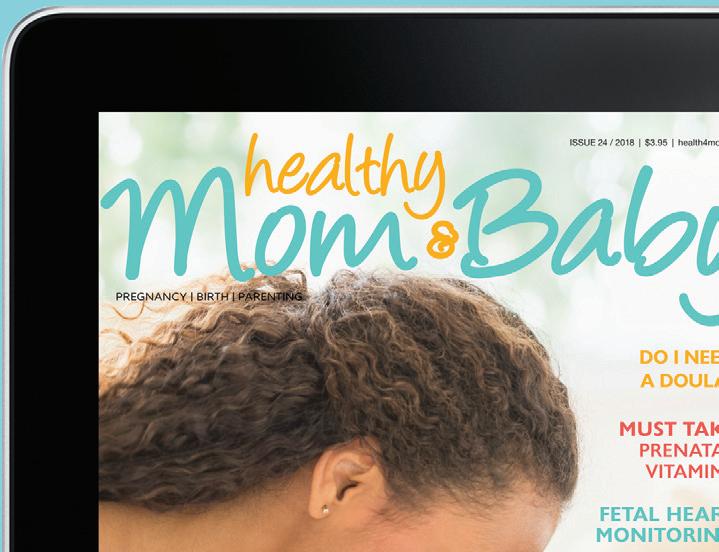









Baby Ddrops® 400 IU are a purified vitamin D3 supplement specifically designed for breastfed infants. They contain only two ingredients; purified coconut oil and vitamin D. Simply apply just one drop where baby feeds, or onto a clean surface such as a washed fingertip. There’s no taste, so the vitamin D drops don't interfere with feeding.**


Made for everyone.

 By Jamie Koufman, m D, fa CS; Julie l . Wei, m D; & Karen B. Zur, m D
By Jamie Koufman, m D, fa CS; Julie l . Wei, m D; & Karen B. Zur, m D
For brand-new and veteran parents alike, being spit on, peed on, and yes, even pooped on is an accepted and expected parental rite of passage. Parents are consumed by what to put into their babies’ bodies—and how it comes out!
Newborn brains aren’t fully developed, nor are their lungs, skeletal systems, teeth, eyesight, or digestive tracts. With so much growing still ahead, there are bound to be a few glitches—including reflux. As a parent, it’s a matter of recognizing what’s normal and what isn’t.
One reason experts believe babies experience reflux is that their lower esophageal sphincter (LES)—the valve that connects the bottom of the esophagus to the stomach—is either not squeezing tightly closed enough or it’s relaxing too often when it shouldn’t. Babies born premature need even more time for their LES to grow stronger.
Terms like “spitting up” and “regurgitation” are all descriptions of reflux. About half of all infants up to age 3 months spit up daily, and as their LES grows stronger, it subsides without needing treatment by their first birthday, or a little thereafter.
about half of all infants up to age 3 spitmonths up daily.
As babies nurse at the breast or feed on formula, they swallow air. Gas bubbles build up, and we burp baby, often forcing up some breastmilk or formula with the air. Spitting up after feeding is normal, and you’ll probably notice it doesn’t seem to bother baby. In fact, it’s even normal if spit up comes out of your baby’s nose.
What isn’t normal—and needs evaluation by baby’s healthcare provider—is frequent vomiting along with breathing problems like a stuffy nose or noisy breathing, vomiting in the night or projectile vomiting.
Sometimes a baby’s digestive tract doesn’t develop normally, resulting in reflux. If your newborn baby has projectile vomiting after each feeding, see their healthcare provider right away to rule out a problem called pyloric stenosis, which requires surgery to correct.
Babies are obligate nose breathers—they have to breathe through their noses for the first 4 months of life. That’s what being an obligate nasal breather means; infants literally need to breathe in that manner. Their lack of ability to compensate by breathing through their mouth is why nasal congestion can pose a serious breathing problem for infants.
Parents of babies with chronically stuffy noses tend to see physicians wondering if their child has allergies. We see many


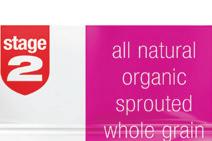



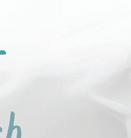















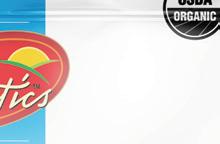











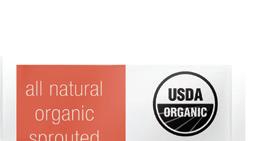































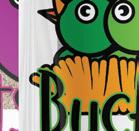
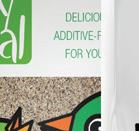



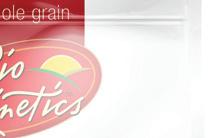























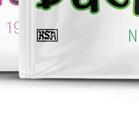


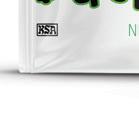




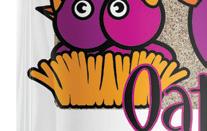












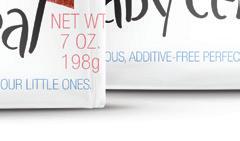










The more servings per day that your young child has of these foods, the more likely your child may have a diet that puts them at greater risk for reflux:
m ilk, such as cow’s milk, but not breastmilk
Juices, soda or punch
Pouched drinks
i ce cream
children younger than 2 years old with nasal symptoms attributed to “allergies,” but despite allergy medications, their symptoms stubbornly persist. In actuality, the development of environmental allergies to allergens such as trees, grasses, pollen, dust mites, and mold takes many years. Parents often believe that the underlying problem is an allergy simply because their pediatricians mistakenly put their baby on allergy medication in the first place.
Infants and toddlers with chronic nasal symptoms are often given too much milk, juice and sugary beverages, while many have inappropriate bedtime snacks, such as milk and cookies. Their “allergies” are among the most common misdiagnoses in the children who see us for second or third opinions. Reflux induced by unhealthy beverages is often the only correct diagnosis.
If your infant or toddler is always congested and full of snot, think respiratory reflux, and closely examine your baby’s diet for acidic or other reflux-causing foods and beverages.

According to the American Academy of Pediatrics, most children have 1 to 2 bowel movements each day, but others may have only 1 every 3 days. As long as an infant appears comfortable passing the stools and is not in pain, having a bowl movement every 3 days may be normal for them. Breastfed babies usually have mustard-looking watery poop. Formula-fed babies have a pastier stool, usually earthtoned colors from yellow to green to brown. In babies who are more than 1 month old and non-breastfed, constipation is considered when there is no bowel movement in 3 or more days, or if there is significant straining to get the stool out.
In a constipated baby, the stool may look like pellets. This may be a sign of sensitivity to newly introduced food, milk products or an ingredient in the formula. If your baby has multiple diapers with pellets of stool, or the stool has blood in it, let your pediatrician know. It’s also recommended that you contact your pediatrician if your child’s stool is white or red.
Dr. Jamie Koufman is a clinical professor of otolaryngology of the New York Eye and Ear Infirmary, Mount Sinai Medical System. Dr. Karen B. Zur is director of the voice program at the Center for Pediatric Airway Disorders at Children’s Hospital of Philadelphia, and Dr. Julie l . Wei is pediatric surgeon-in-chief of Nemours Children’s Hospital. This article was adapted from their latest book, Acid Reflux in Children: How Healthy Eating Can Fix Your Child’s Asthma, Allergies, Obesity, Nasal Congestion, Cough & Croup.
In addition to projectile vomiting, the many aliases of reflux in infants include:
r unny nose
n asal congestion
n oisy breathing
o ngoing cough
a llergies
Constipation
a bnormal bowel movements
Choking while feeding
f ever with wheezing
n ot gaining or losing weight
Pauses in breathing while asleep (sleep apnea)
reoccurring pneumonia
Significant eczema
Swollen or tense stomach



Did you know that a baby’s skin is paper thin?














Bernard Cohen, M.D., Director of Pediatric Dermatology at Johns Hopkins Children’s Center says, “A baby’s skin starts out thinner, has less pigment, and doesn’t regulate temperature as well as the skin of bigger kids and adults…it takes about a year for that epidermis to get up to speed and function effectively.”
The clothing your baby is wearing is important. Choose certified organic cotton over conventional cotton for your baby’s sensitive skin.
“Organic production prohibits the use of synthetic toxic and persistent pesticides and fertilizers, as well as genetically engineered seed. Third-party certification organizations verify that organic producers meet strict federal regulations addressing methods and materials allowed in organic production.” (OTA)

Simply Chickie products (simplychickieclothing.com) uses GOTS certified organic cotton, so you can have peace of mind. Designed by a mom and American made.








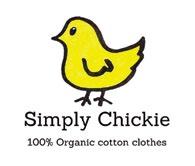
 BY CATHERINE M. HILL, MSN, FNP-BC
BY CATHERINE M. HILL, MSN, FNP-BC



From birth, protecting and promoting baby’s healthy skin is a daily job for parents and caregivers. Baby’s skin protects them from bacteria and germs and helps them hold a normal temperature. At birth, your baby’s skin is thinner than yours, and it will continue to thicken and change through their 1st birthday.
Babies born before term (37+ weeks) may need several months after birth for their skin to fully work as a barrier, keeping moisture so they stay warm and hydrated.
From bathing and moisturizing to product selection, you can trust you’re doing the very best every day for your baby when you follow the advice from your nurses. First, be aware of things that can cause skin breakdown or irritation, including:

Bathing baby too frequently; bathe every few days, not daily

Using skin products that can irritate baby’s skin
Having a family history of skin rashes or infections (dermatitis)
Protecting baby’s skin begins with keeping the nature-made, white, creamy coating called vernix intact from birth; there’s no need to rub or wash it off. Vernix protects baby’s skin, keeping it soft. It’s your baby’s fi rst barrier cream;
1. Begin by washing your hands
2. Place baby’s bathtub in a warm room, safe space and on a strong surface
3. Use warm —never hot—water (100–104° F); check the water temperature with a bath thermometer
4. Swirl the water to eliminate any hot spots
5. While holding baby, lower them into the water feet first. Allow baby to rest on your arm or supported by the tub with the water just up to their shoulders. If baby’s tub specifies different instructions, follow the instructions with your baby’s bathtub
6. Always support baby’s head and neck during bathing
7. Use gentle cleansers designed to protect the pH of baby’s delicate skin; never use products for adults or older children on babies
8. Begin with a clean cloth; wash baby’s face first, body second and diaper area last. Always wipe away from the eyes and mouth and then into the creases as you go behind their ears, around their neck, into their underarms, between their fingers and toes, and in their diaper area
9. To shampoo, first wet baby’s hair, then apply an infant-safe shampoo gently with your hand. Lightly massage baby’s scalp with your hand or a soft baby brush, and rinse with water moving down the back and sides of baby’s head. Do not put pressure on the soft spot—known as the fontanel—in baby’s head 10. Gently rinse baby’s body with your hands or a soft cloth, moving from head to feet, ensuring no soap is left behind 11. Move baby from their bath into a towel or blanket; pat their skin dry rather than rubbing it. Once dry, dress baby to keep them warm
it moisturizes baby’s skin by increasing its ability to hold water, keeping baby’s skin supple and soft. Yes, it’s sticky, but just let it absorb naturally into baby’s skin over time.
Bathe baby about 3 times a week—or every other day—for the fi rst month of life if all is healthy and well with their skin; shampoo baby’s hair only once or twice a week.
Bath time begins with preparation: Arrange baby’s tub, washcloth and towels or blankets, and products all within reach. Bathe baby in a warm room away from drafts. Keep baths short—about 5-10 minutes at fi rst—so that baby doesn’t get cold. Unless your healthcare provider has told you otherwise, it’s OK to immerse baby’s cord stump in the water when bathing baby in a tub.
If your baby was born early (before 37+ weeks), consider swaddling baby for bath times, and keep baths short—just a few minutes at most as preterm babies struggle to hold a healthy, normal body temperature. Have warmed towels prepared to immediately wrap baby in following the bath.

CATHERINE M. HILL, MSN, FNP-BC, is an advanced practice nurse and nurse program development specialist at AWHONN, which publishes this magazine. This article was adapted from AWHONN’s Neonatal Skin Care EvidenceBased Clinical Practice Guideline, 4th ed

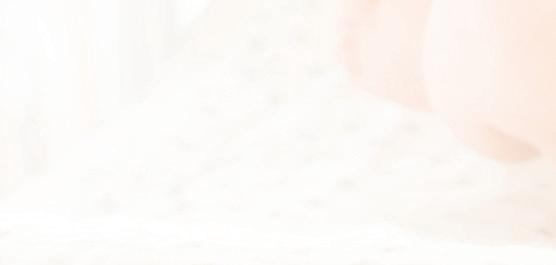
Follow these tips to choose an infant-friendly product for moisturizing your baby’s skin:

Use products designed and made for infant skin only as they can be protective, help baby’s skin retain water, remain soft and supple, and improve how baby’s skin barrier works. ey’re also less likely to sting baby’s eyes. Adult products aren’t designed for infant skin.
Use as few products as possible —more is not better when it comes to infant skin—use only the specific products needed for baby’s skin care issues at that moment.
Choose safe products that contain tested ingredients; natural and organic don’t always mean “safe” when it comes to infant skin. “Organic,” “green” or “natural” are marketing terms that aren’t defined or regulated by the federal government. Plant-based products aren’t necessarily safe or safer for newborn skin and, in fact, may be allergenic or toxic to infant skin.
Keep skin issues at bay, such as eczema (allergic contact dermatitis), which is the most common skin condition resulting from the use of herbal therapies.

CARA B Naturally® is a family-owned business based in Charlotte, NC, offering premium quality, genuinely all-natural skin and hair care products for ethnically diverse babies and children.






We are dedicated solely to children’s personal care, with a singular focus on chemical-free skin and hair care. At the heart of our company is a desire and goal to promote positive images and messages for and about ethnically diverse children; we believe their natural beauty should be celebrated and treasured. This is a theme that carries through from our company logo, to our labeling, and to the quality of our all-natural products.


There are many other children’s products that claim to be natural, but still include chemicals and synthetic ingredients. When we say we’re all-natural, we mean it. CARA B Naturally products are free of parabens, petrolatum, phthalates, sulfates, mineral oil, artificial fragrances and preservatives. As proof of our commitment to using only natural ingredients, our products have been awarded the coveted Natural Products Association certification – the first and only personal care product line specifically formulated for ethnic children to earn such a distinction.


Our customers can feel good about using CARA B Naturally – promoting the belief that our Children Are Always Beautiful, Naturally.
Special offer for Healthy Mom and Baby readers!
Take 25% off your CARA B Naturally purchase. Visit mycarab.com and use promo code HEALTHYBABY at checkout.






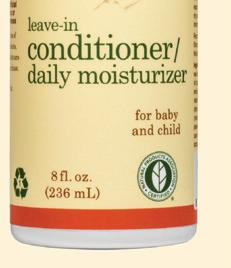


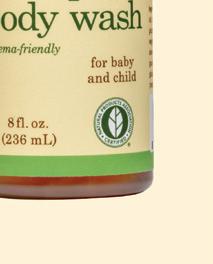




•
•
•
•

• Now available on Amazon!




Mothers who lose their infants are at particular risk for prolonged grief disorder (PGD). Here’s what you can do if you’re still grieving the loss of a child.
For every parent, the loss of a child is a traumatic event. But for some people, the grief is especially severe, and they experience what is known as prolonged grief disorder (PGD). Dr. Rick Goldstein of Boston Children’s Hospital led a study to better understand PGD, the symptoms and warning signs, and how healthcare providers can help.
Mothers in particular are at risk for PGD, which can be caused by sudden death and the fact that they weren’t prepared for it. Since sudden infant death syndrome (SIDS) and other sleep-related infant deaths fall into this category, mothers who have experienced this type of loss were the focus of Dr. Goldstein’s study.
SIDS is the leading cause of more than 3,500 infant deaths in the US every year when combined with other sleep-related infant deaths such as accidental suffocation. SIDS is the sudden death of a baby age 1 month to 1 year old.
Grief is a normal response to the death of a loved one or close friend and affects how we think and feel. But people who suffer from PGD have such an enduring grief that it goes beyond what most of us experience, even to the point of disrupting daily living.
When PGD affects the health and quality of the life of a mother, it may also influence the lives of the other children in her family and change the way she bonds with her subsequent babies. PGD is different from depression or post-traumatic stress disorder (PTSD), which is why if you suspect you’re experiencing PGD, it’s critical that you discuss the differences in how you’re feeling with your healthcare provider so that you get the treatment that you need.
In the 5-stage Kubler-Ross Grief Cycle (denial, anger, bargaining, depression, acceptance), Dr. Goldstein found that moms experiencing PGD don’t move into the fi nal stage, acceptance.
In fact, women in the study shared that the acceptance stage doesn’t take into account their challenges as mothers who are responsible for maintaining memories and a sense of value around their deceased child’s life. ey shared the diffi culties they face over time, as their deceased infant is less remembered or considered, and how that contributes to their anger and their inability to embrace acceptance.
Bereaved parents in the study described how difficult it is to discuss their experiences of loss and to ask for help in grief support, something that is further burdened by the stigma of blame that surrounds many SIDS- and sleep-related infant deaths.
If you’ve lost an infant and are still grieving, this new research shows that it’s not unusual for you to need bereavement support for months—even years—after a sudden infant death. Every day at First Candle, a non-profit dedicated to reducing SIDS, the staff receives calls from parents who are struggling with paralyzing grief. For many of them, their families, friends and colleagues simply can’t understand the level of despair they live with for months and even years. Dr. Goldstein’s study shows us that the grief a mother experiences after the death of her baby is unlike any other.
Although, as Dr. Goldstein describes in his study, “pangs of grief” are not in themselves a mental disorder, they are a key feature of what’s known as pathological grief, and the realization that moms can experience such deep and lasting distress suggests how important the bond of attachment can be between mothers and their deceased babies.
is helps explain why PGD can have such an impact on a woman’s bonding experience in the pregnancies that come after her loss, and on her parenting of other children.
If you think that you or someone you know is suff ering from PGD, consider these actions: Share your feelings with friends and family
Talk to your healthcare provider
Get involved with a bereavement support group
Seek help from a professional therapist specializing in grief disorders
Grief typically includes anger, avoidance, a sense of meaninglessness, shock and numbness, but PGD symptoms are longer-lasting and include:
Significant emotional pain and yearning longer than 6 months after a loss
Physical health issues
Role confusion—are they still considered a mom?
Diminished sense of self
Anger or bitterness
Inability to trust people
ALISON JACOBSON is the chief executive officer of First Candle, a national non-profit organization dedicated to eliminating sleep-related infant deaths while supporting those families who have experienced a loss. Alison is also a mom who lost an infant to SIDS.











1


For over 50 years, this safe and effective combination of ingredients has been designed to prevent skin irritation and infections from developing while maintaining healthy skin in the toughest of environments, your baby’s bottom. Available on Amazon and diaprex.com
Send your baby on an under-the-sea adventure of colors and patterns with the Lamaze My First Fish Bowl. A creative version of the put-in, take-out concept, this fun fish bowl includes four sea creatures that each make a different sound—crinkle, rattle, jingle or squeak! These easy-to-grasp creatures help develop hand-eye coordination and are full of textures for baby to explore.
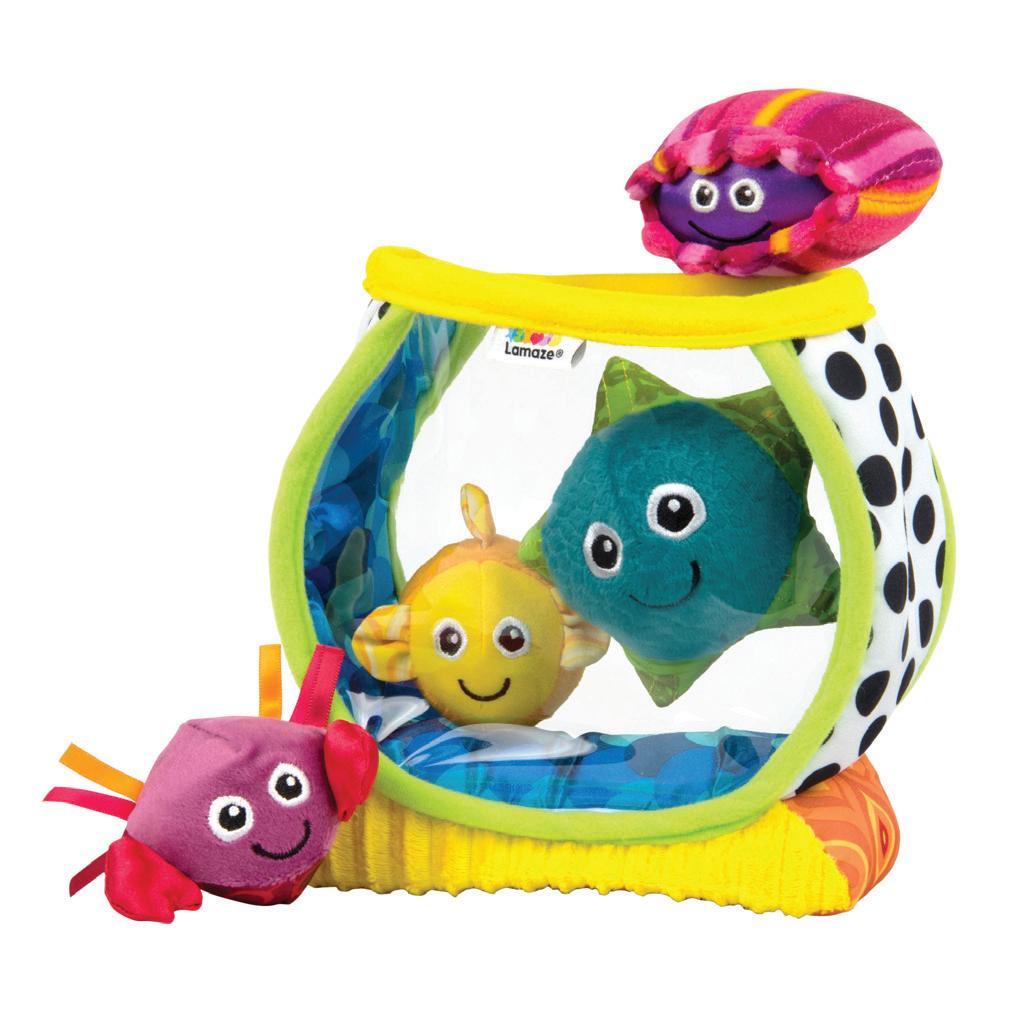
Lamazetoys.com



4
Bella Rose and her friends share the words of affirmation they’ve learned to help them to be polite using manners. They practice using positive words like ‘sorry’ and ‘thank you’ with family and friends. Show your child the magic in being courteous when interacting with others. They will enjoy the positive responses they receive.
http://a.co/0vJMJPd

There’s not a mom out there who hasn’t gazed down at their infant and wondered with a mix of curiosity and fear, “when will my baby get their first tooth?”
Teething ranks right up there among the highest stressors infants face, experts know, because along with the new pearly whites come loads of fussiness as they cut through your little one’s gums. Do you know that your baby was born with their tooth buds already embedded in their gums?
Long before you ever see the first edge of a tooth pushing its way into your baby’s mouth, you may notice that they are a lot more fussy than usual, are drooling, want to nurse or feed more often and may have a low-grade fever (up to 100.9⁰F). Your baby may also want to put everything in their mouth and chew with their gums. Excess saliva may cause a rash around the face, and they may refuse to nurse even though they seem interested in nursing.

Contrary to popular beliefs, teething doesn’t give your baby a high fever (101⁰F or more) or diarrhea. When these symptoms are present, it’s time to see your pediatrician.
Although babies can even be born with a tooth or 2 already in, they will get their 2 bottom and 2 top front teeth in that order before their molars and side teeth emerge. By their 3rd birthday, babies should have 20 teeth in total. As their teeth debut, you may even see small cysts on the gums where the tooth below is breaking through.
You can help your baby ease into their teeth with minimal discomfort by practicing good gum care from birth. Ask your dentist for or purchase a finger-sock-like baby toothbrush or use a
washcloth and begin massaging their gums with cool water on a regular basis. Skip the toothpaste until they’re age 3 and can swish and spit it out, say experts at the American Dental Association.
It’s time for your baby’s first visit to a pediatric dentist when they have 8 teeth in their mouth, which is typically around age 1. Starting early with good dental care will not only help your baby with their first set of teeth but will also protect permanent teeth from bacteria and decay as they’re forming in the gums, and until they begin to make their first appearances around age 6.
Give your baby something cold to mash their gums against to reduce pain and swelling while teething. Avoid pain medications (infant Tylenol is OK) unless nothing else soothes them.
n atural t EE thing
strat E gi E s
B a cold or frozen clean washcloth
B a silicone or natural teether (avoid ones with liquids as they can leak or be bitten through)
B s oft baby foods, like applesauce or yogurt
B Frozen fruit safely contained in a “mashing” bag designed for babies to chew on
B Teething crackers
(These T ips will help your baby cu T T heir chompers wi T h as li TT le pain as possible.Carolyn Davis CoCkey, M ls , lCCe , is editor of Healthy Mom&Baby and a l amazecertified childbirth educator.




Over 600 medical studies on the effects of human touch prove what moms have always known: Hugs are important. In fact, more and more hospitals state that they are vital to the healthy development of a child. And the benefits of human touch for babies often extend throughout childhood.


The benefits of hugging.
Every hug sets off cascades of hormones that benefit health and help regulate body temperature. Oxytocin, the hormone released by touch, is even nicknamed the “bonding hormone.” A hug can stabilize heart rate, increase oxygen levels, strengthen the immune system, and reduce crying and stress.
After the first hug, let the second thing that touches baby’s skin feel just as good. Huggies® Little Snugglers Diapers and Huggies Natural Care® Wipes provide our best care to help keep their skin clean and healthy. And as perfect as the day they were born.




www.huggieshealthcare.com
® Registered Trademark and * Trademark of Kimberly-Clark Worldwide, Inc. © KCWW. © Disney. Based on the “Winnie the Pooh” works by A.A. Milne and E.H. Shepard.

